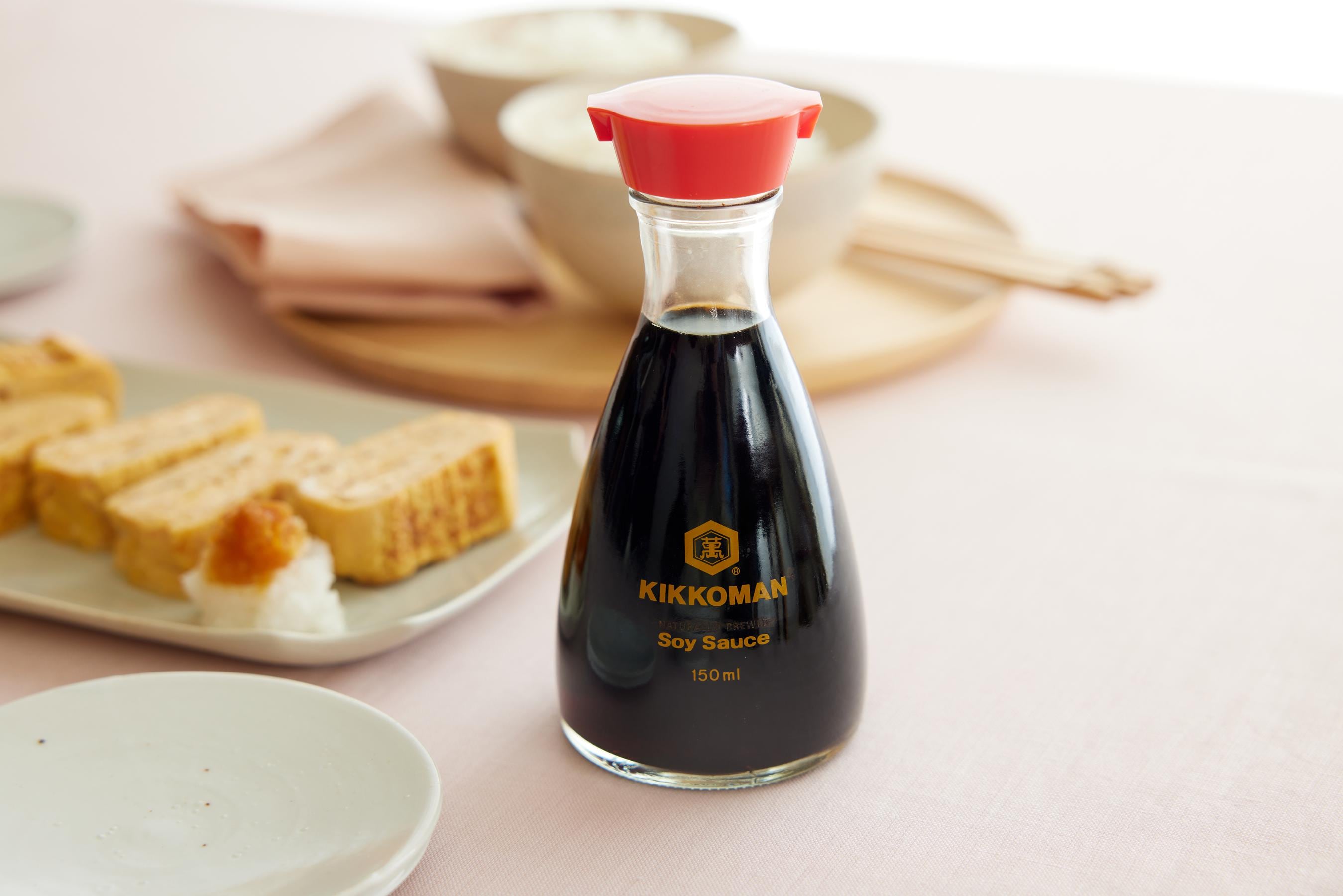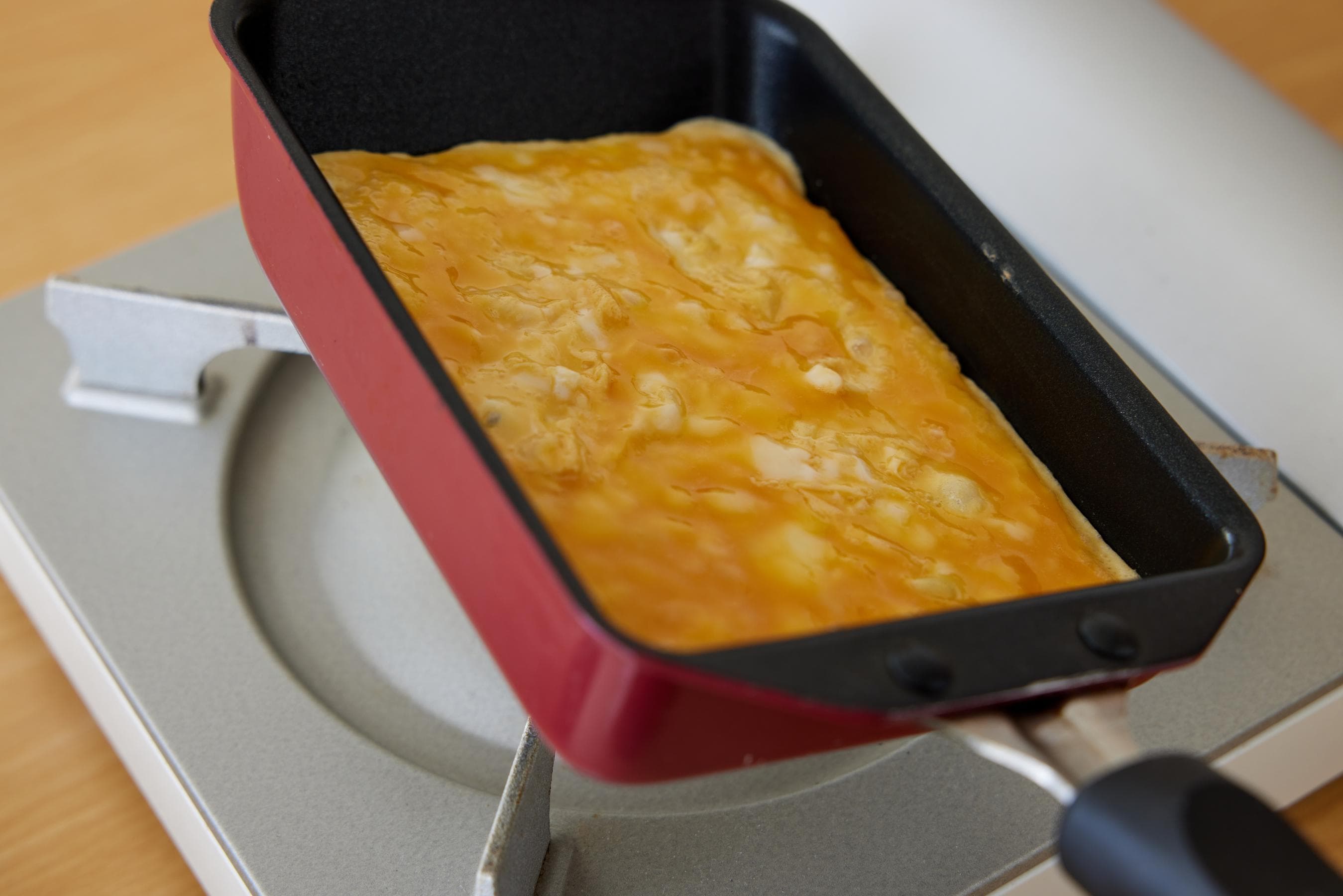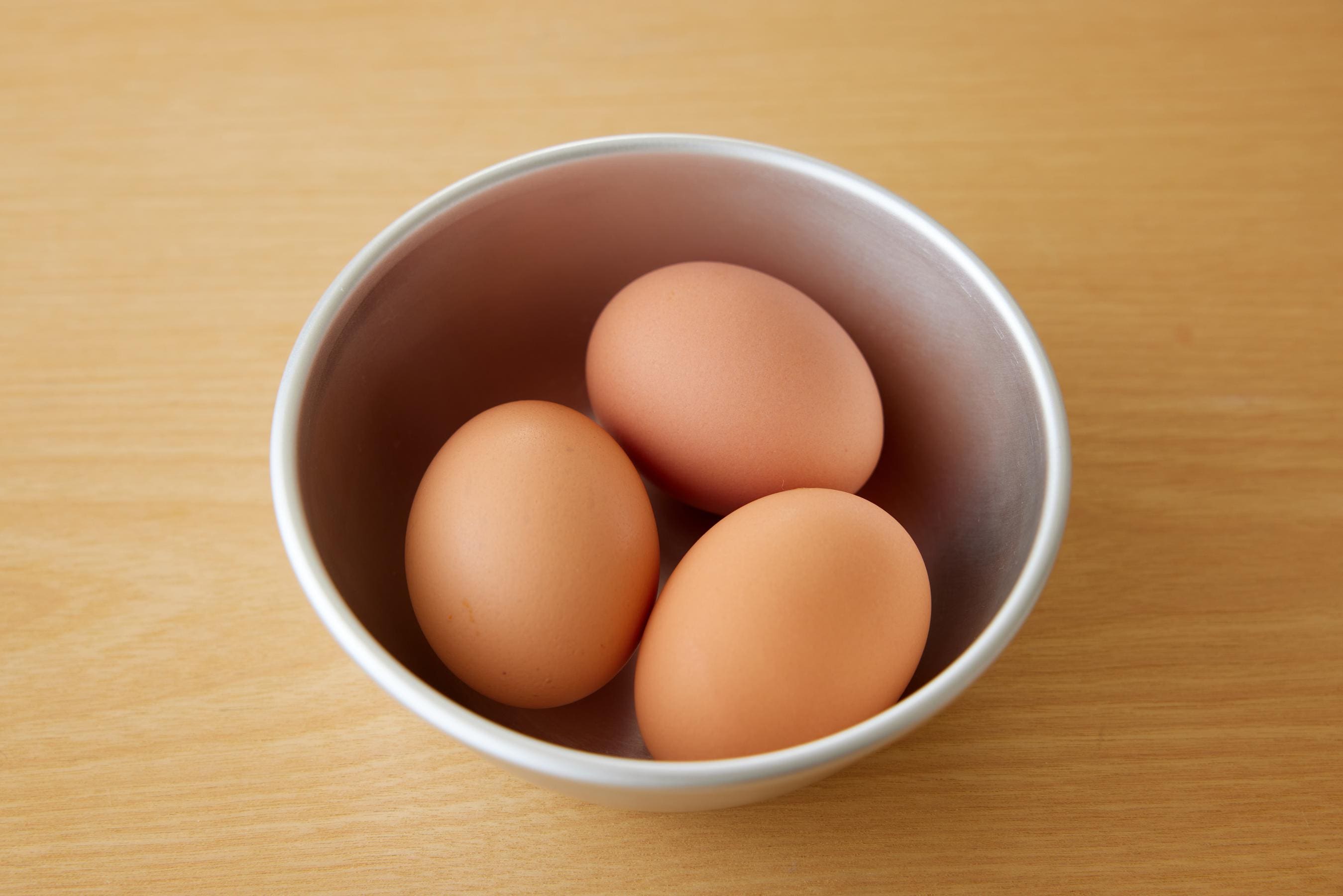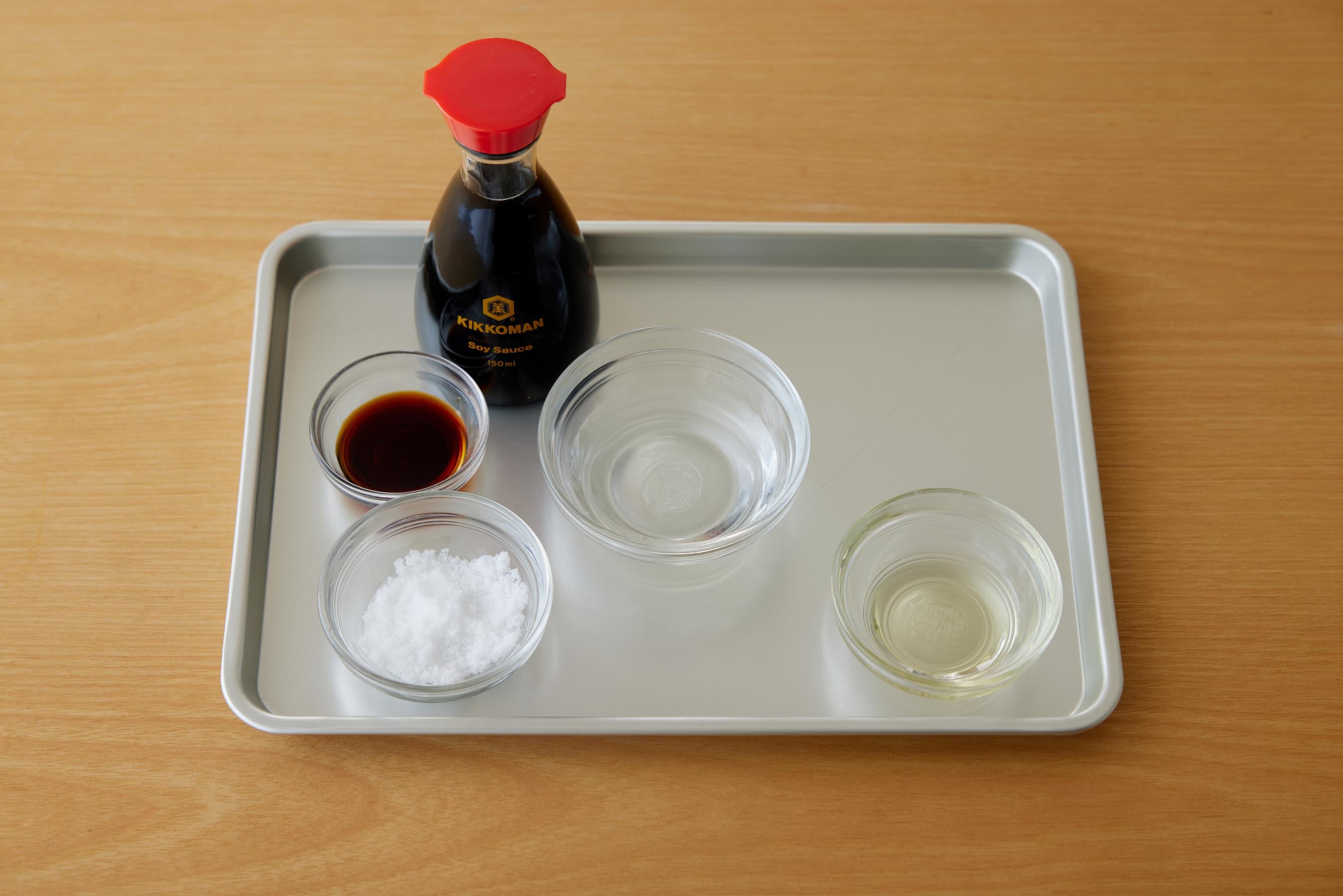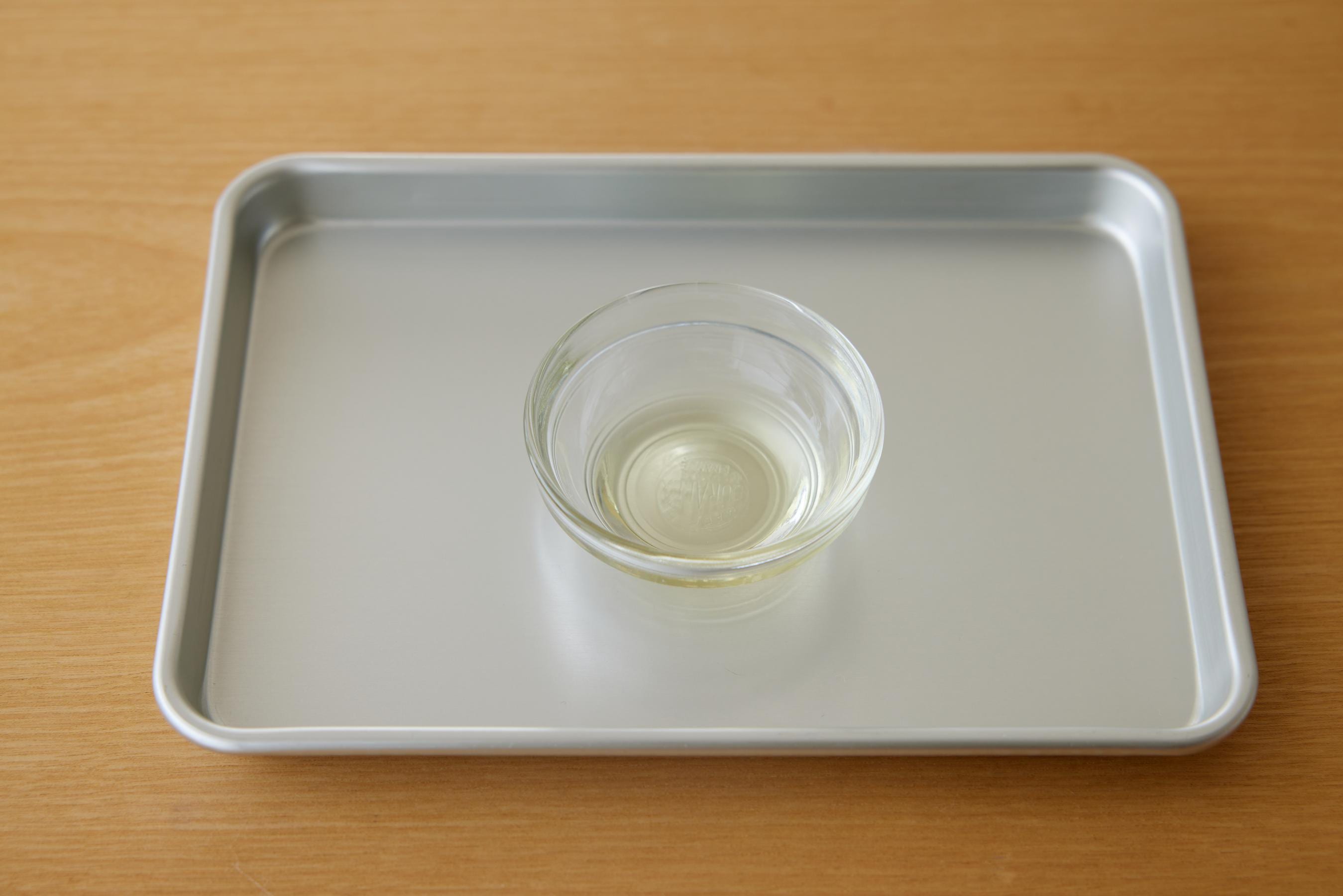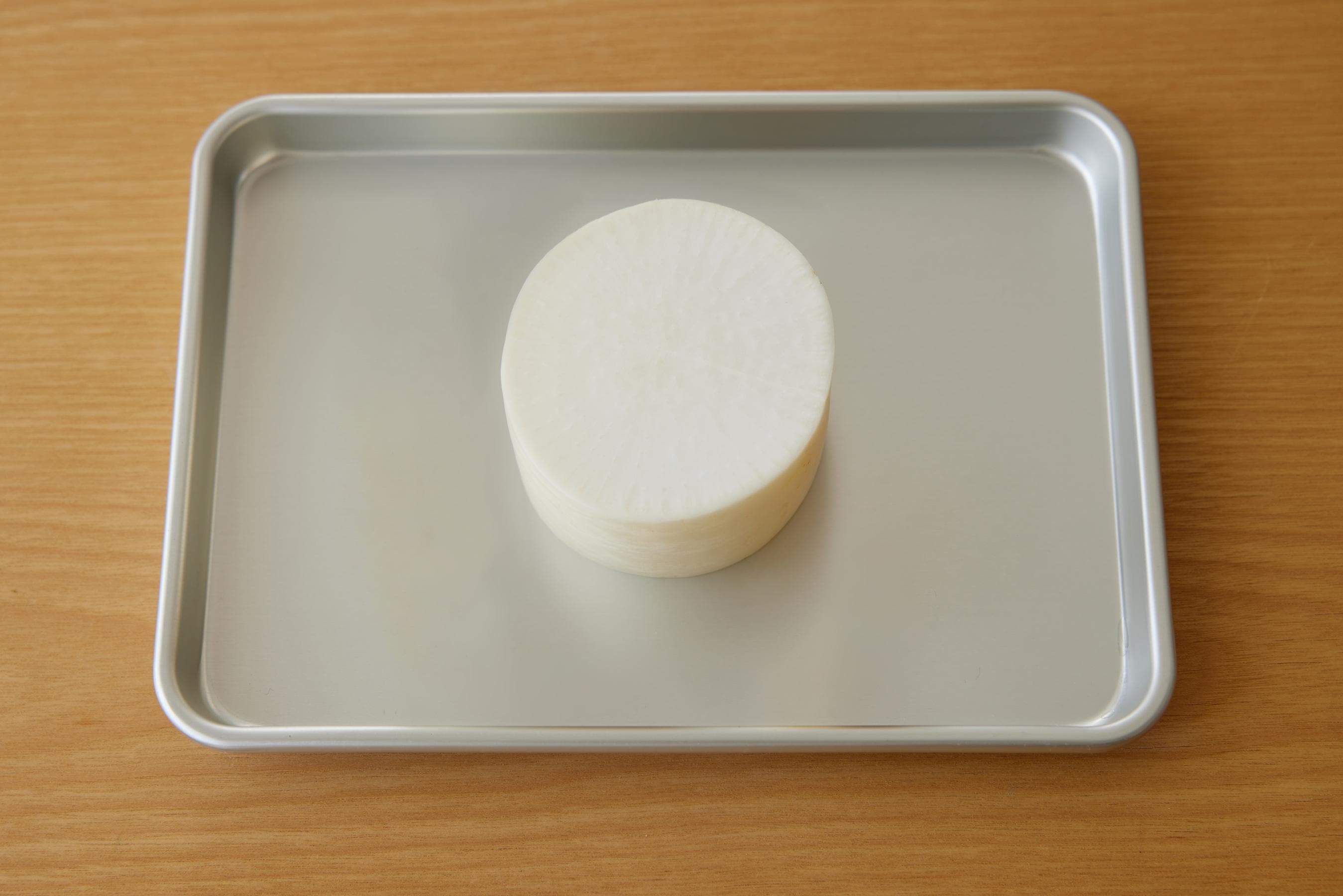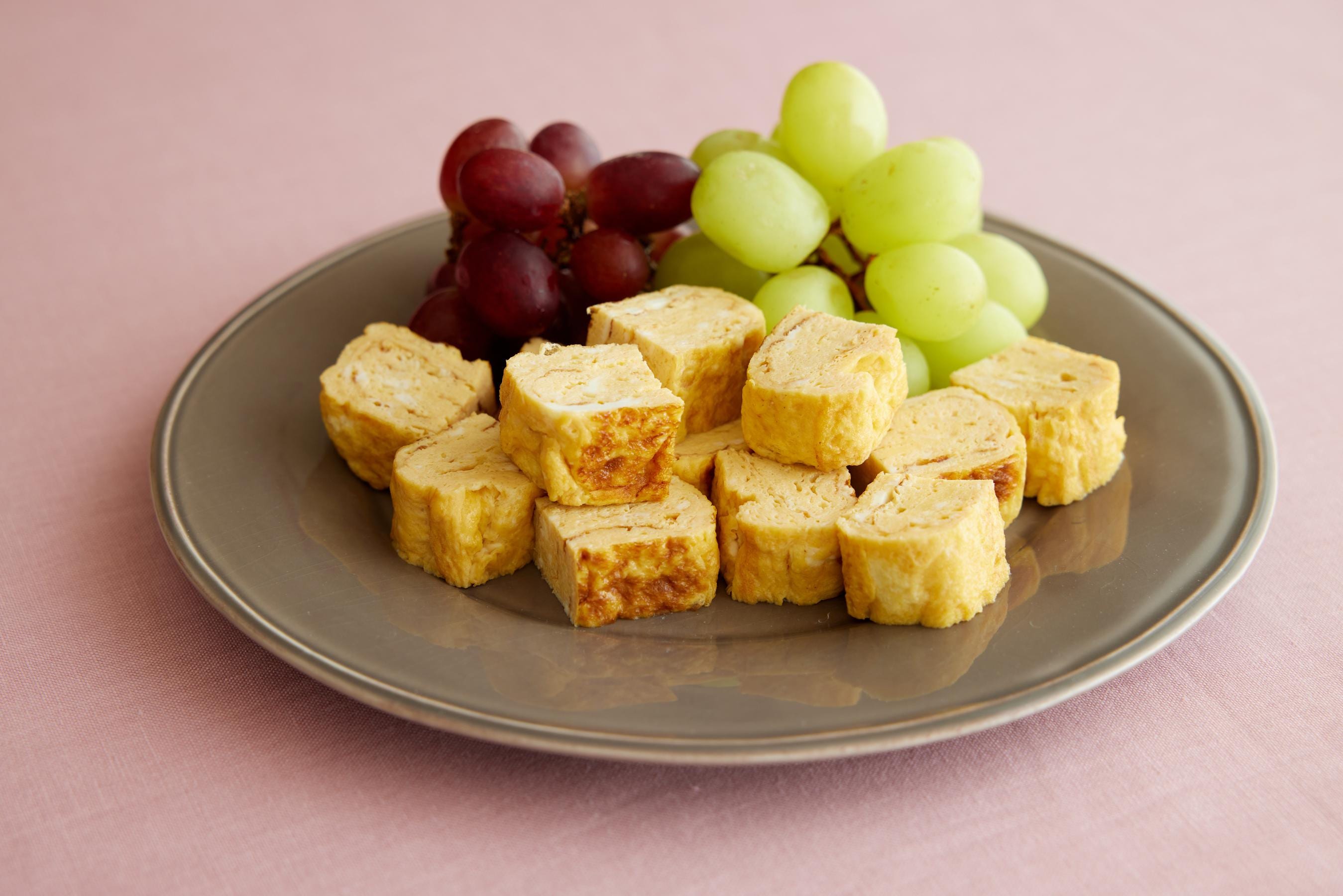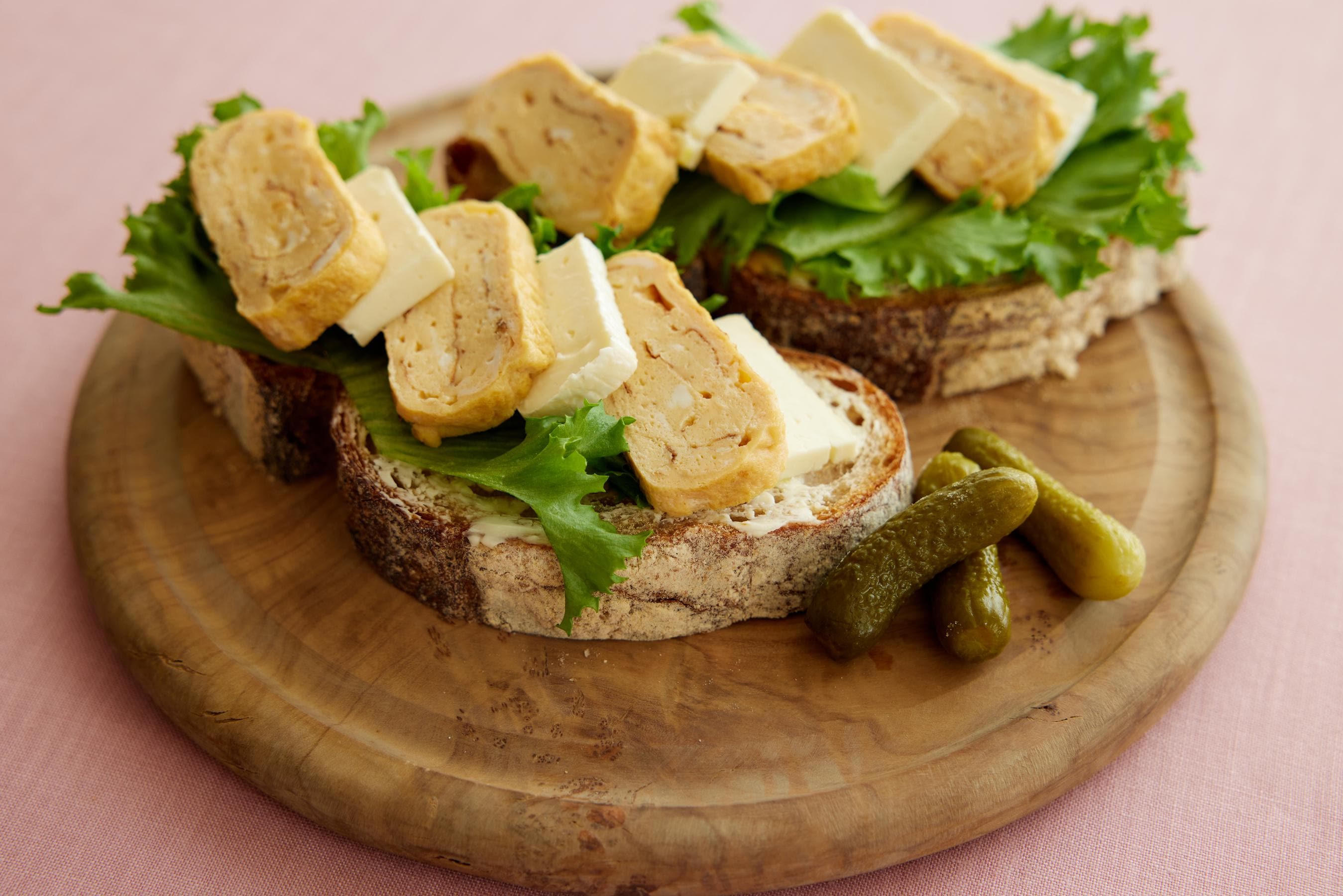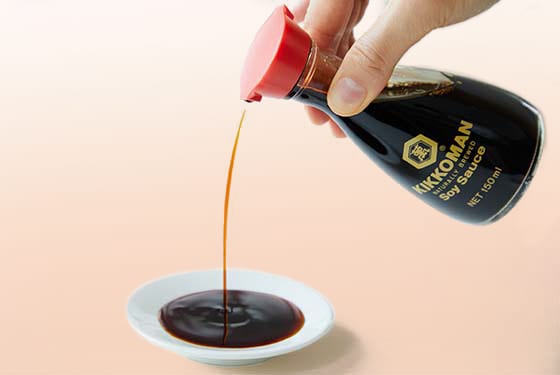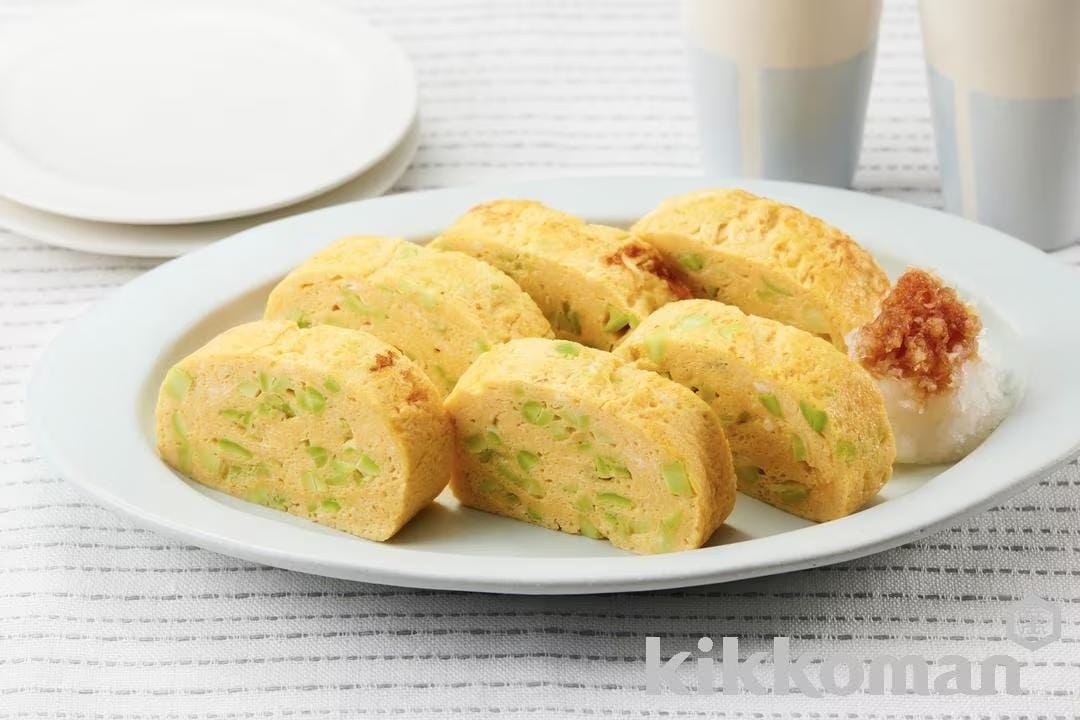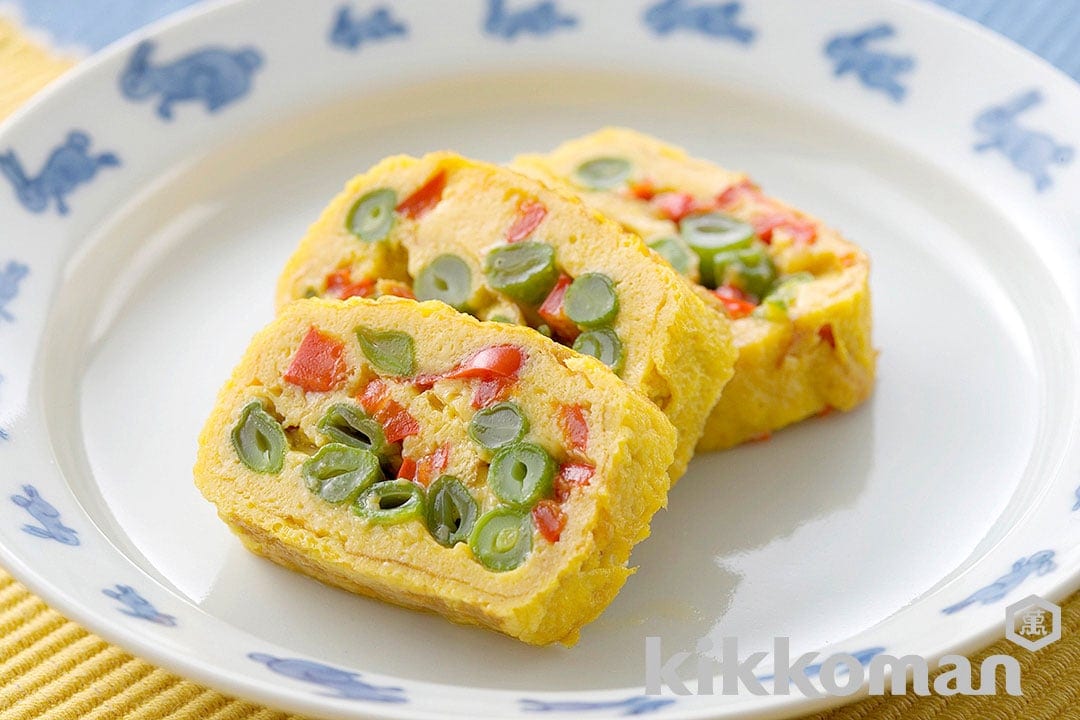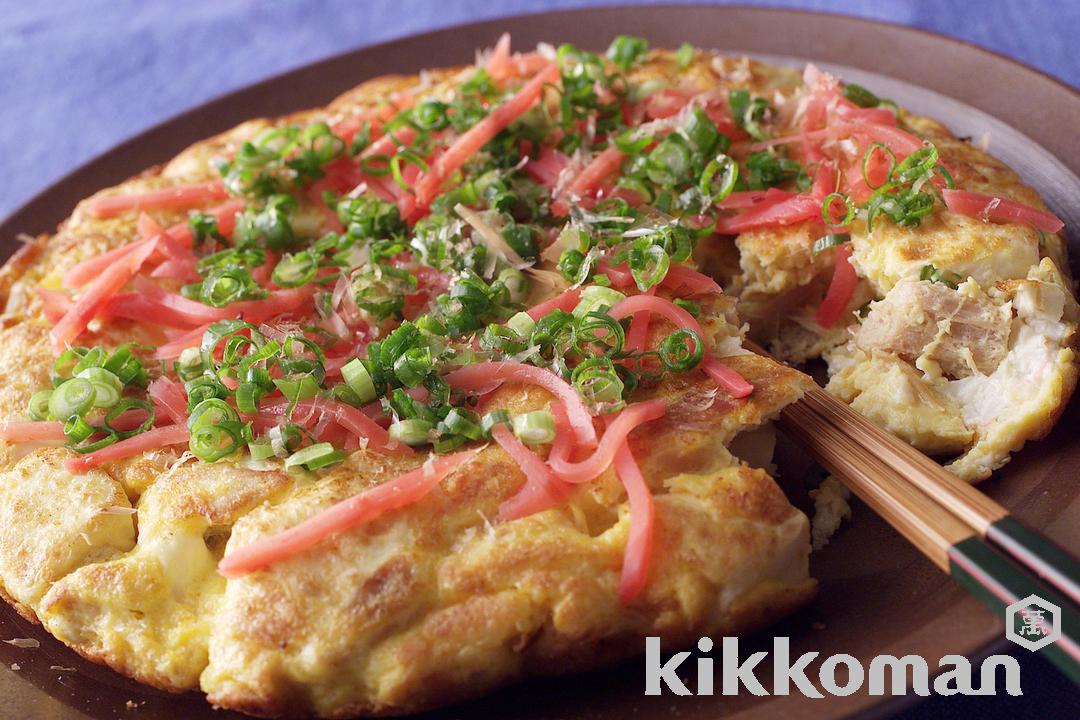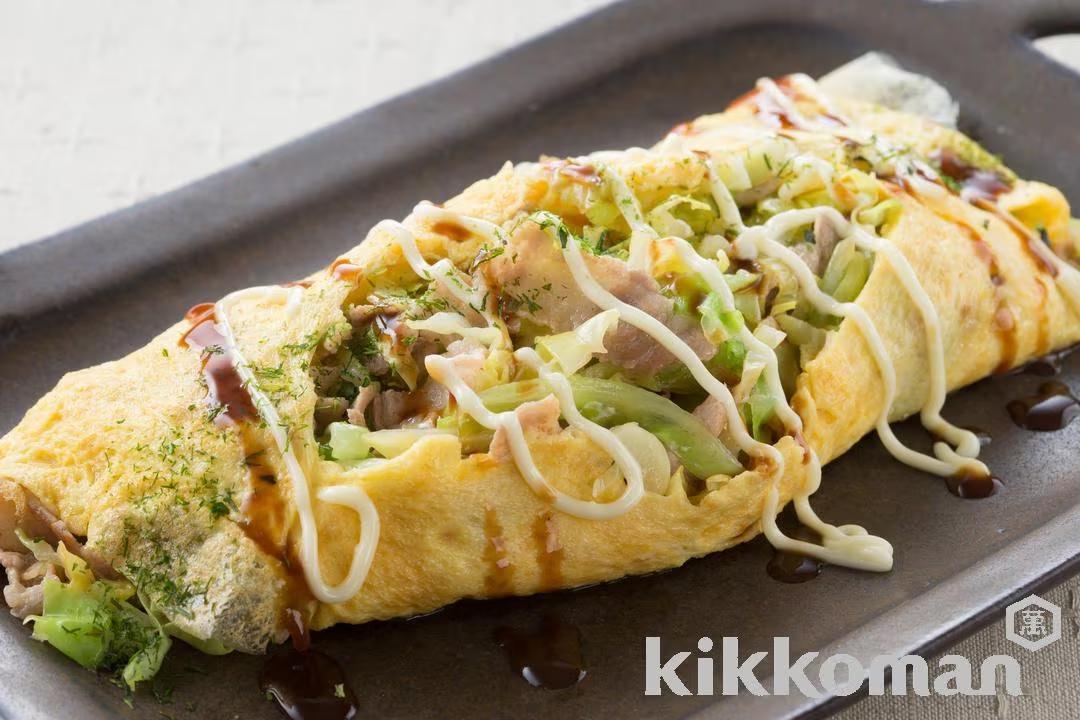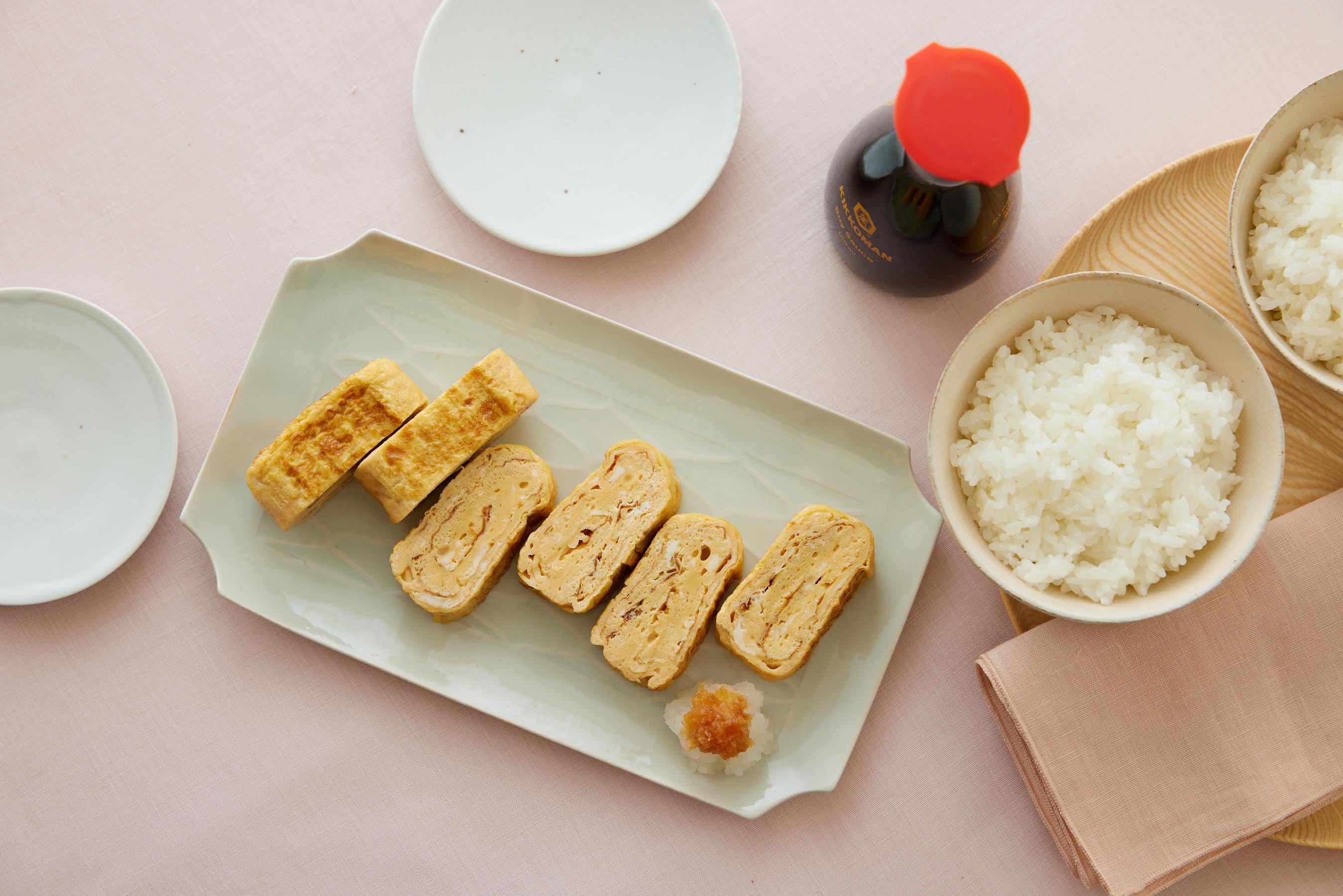
A sweetened Japanese omelette by rolling several thin layers of fried egg
- by Yuko Ihara
Table of Contents
- What is Tamagoyaki?
- The Secret to Delicious Flavor of Tamagoyaki
- Things to Remember When Cooking Tamagoyaki
- What is Tamagoyaki Pan?
- Ingredients for Making Tamagoyaki
- Calories and Cooking Time
- How to Prepare Egg Mixture
- How to Make Tamagoyaki in a Tamagoyaki Pan
- How to Make Tamagoyaki in a Fry Pan
- More Ways to Enjoy Tamagoyaki
- Kitchen Utensils Used in This Recipe
- Kikkoman Products Used in This Recipe
- About the Recipe Author
What is Tamagoyaki?
Tamagoyaki (卵焼き or 玉子焼き) is a dish made by seasoning liquid egg and frying it. Since Japan’s Edo Era (1603 - 1867), Tamagoyaki has been a popular ingredient for sushi and an indispensable dish in bento boxes for cherry blossom viewing and theatre performances. The dish introduced here is “atsuyaki tamago” (thickly fried egg), which is browned and fried thoroughly. However, "dashimaki tamago"—a thick omelette made with dashi (Japanese soup broth) and fried without browning—is more common in the Kansai region. To make the omelette thicker, a special frying pan called a “Tamagoyaki pan” is commonly used in Japan.
The Secret to Delicious Flavor of Tamagoyaki
Things to Remember When Cooking Tamagoyaki
Check the Eggs’ Doneness
The most important factor is the degree of browning of the egg mixture poured into the Tamagoyaki pan. Tamagoyaki is made by pouring the egg mixture into the Tamagoyaki pan, frying it, rolling it up when it hardens, and then repeating the process. If the egg mixture is overcooked, it will not stick together when rolled; if it is too soft, it will fall apart and be difficult to roll. The best time to start rolling is when the surface of the egg mixture looks raw but does not flow when the Tamagoyaki pan is tilted.
What is Tamagoyaki Pan?
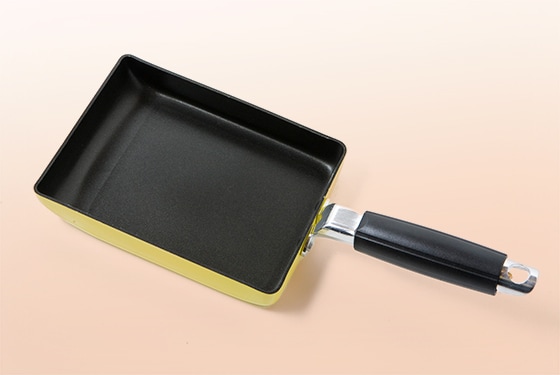
A Tamagoyaki pan (“Tamagoyaki-ki” in Japanese) is a cooking tool that is essentially a rectangular fry pan. Simply pour in the egg mixture and roll to form a rectangular shape. In ordinary Japanese households, specially coated Tamagoyaki pans are often used.
If you do not have a Tamagoyaki pan, you can also make Tamagoyaki in a standard fry pan. See "How to Make Tamagoyaki in a fry pan"
Ingredients for Making Tamagoyaki (Servings: 2)
Main Ingredients
Seasonings
Kikkoman Soy Sauce - 1 tsp
sugar - 1 Tbsp
water - 2 Tbsp
Garnish
daikon radish (grated) - 5 cm (2 in.)
Calories and Time

* Nutrition facts are for one serving
How to Prepare Egg Mixture
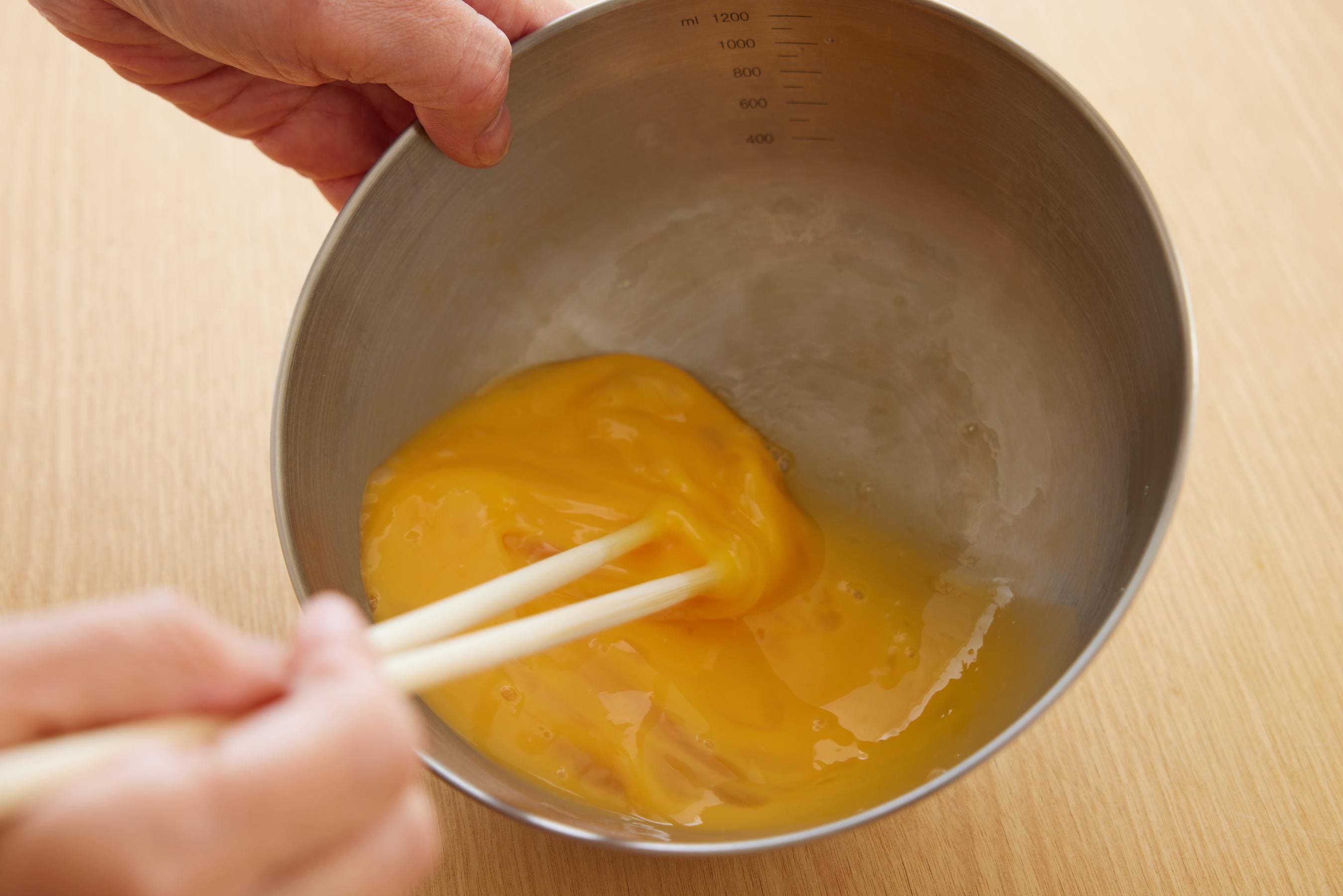
- 1Crack the eggs into a bowl. Use chopsticks or a fork to beat the eggs gently so as not to create foam.
- TipsWhen beating the eggs, you can break up the egg whites by lifting up the chopsticks or fork occasionally.
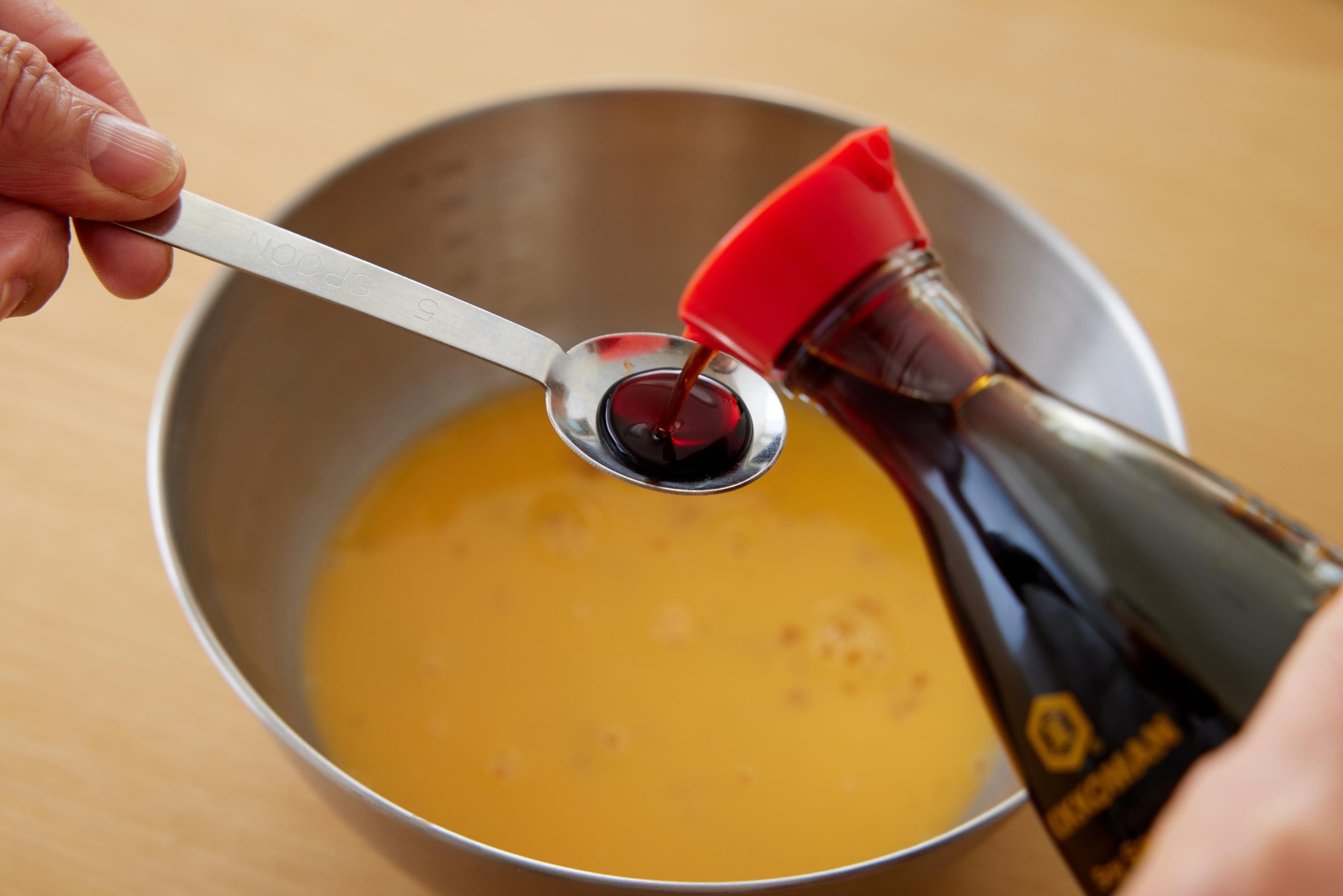
- 2Into the beaten eggs, add water, sugar, and Kikkoman Soy Sauce.
Watch video for Preparing Egg Mixture
How to Make Tamagoyaki in a Tamagoyaki Pan
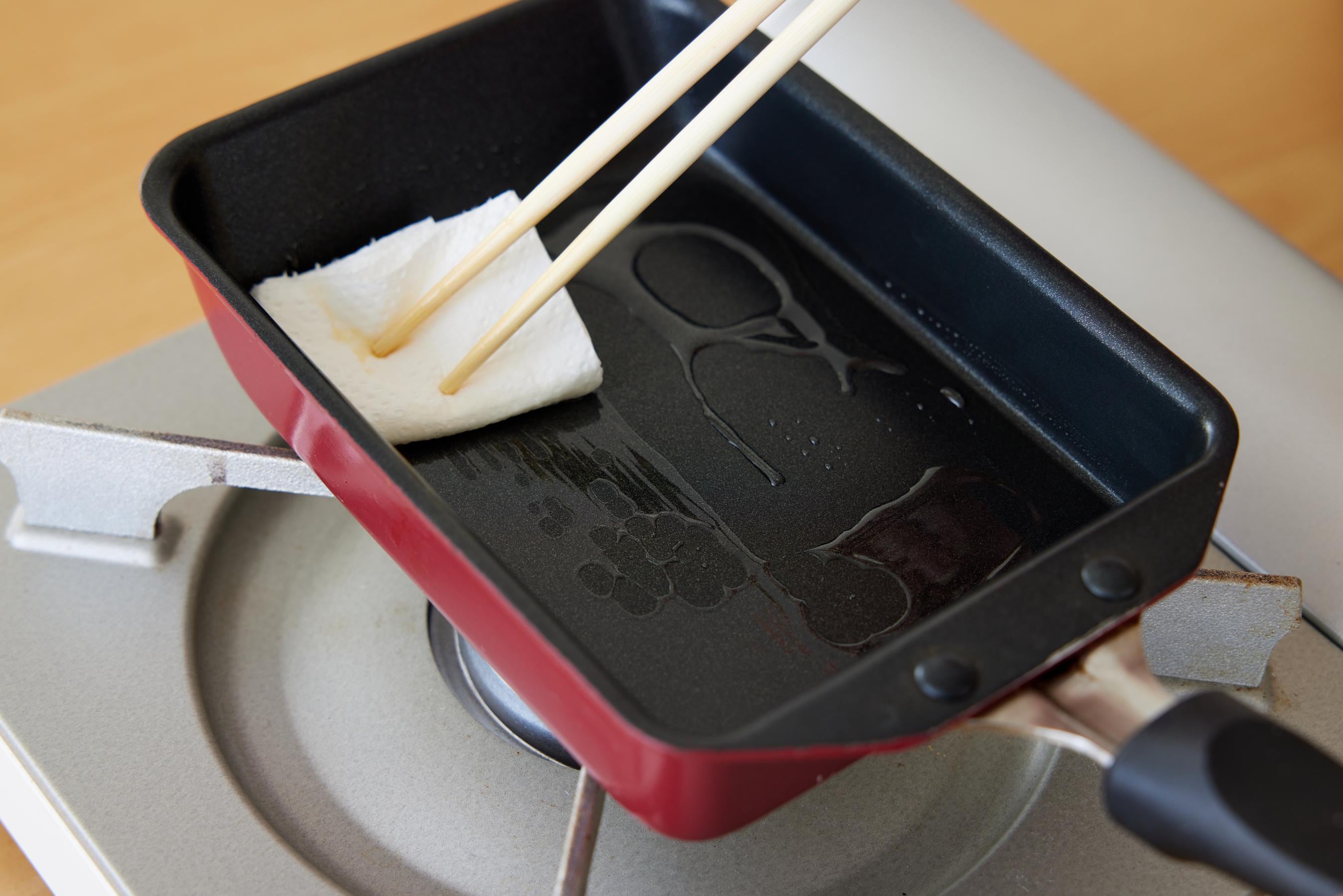
- 1Using a paper towel, grease the surface of the Tamagoyaki pan, then heat the pan over medium heat.
- TipsDrip some of the egg mixture into the pan to check the temperature. If the egg mixture sizzles, then your pan is ready.
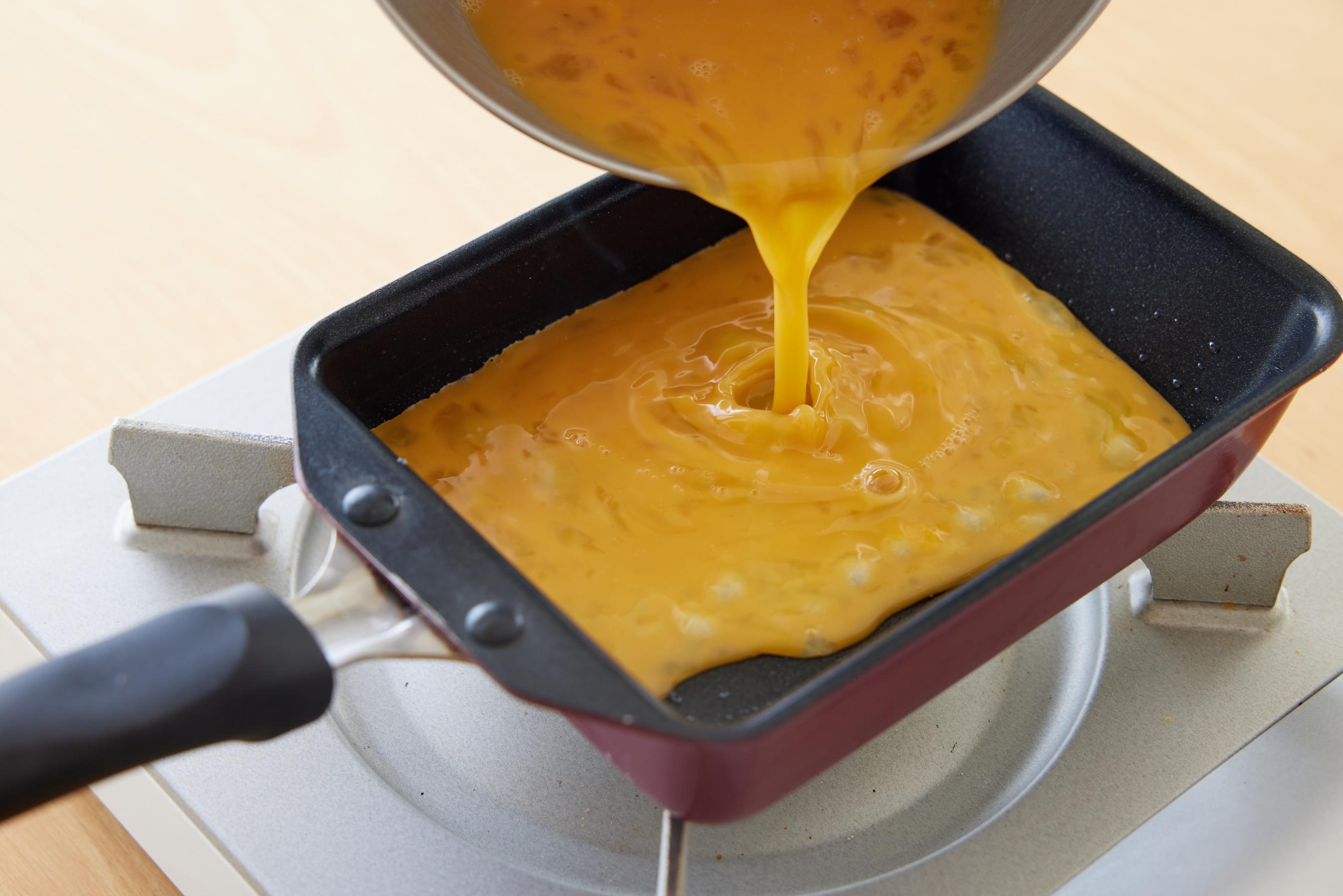
- 2Once the oil is heated, pour in about 1/3 of the egg mixture and spread in the pan evenly.
- TipsIf bubbles begin to form in the egg mixture, use the pointed end of chopsticks to poke and pop the bubbles. Doing this will allow the egg to cook evenly!
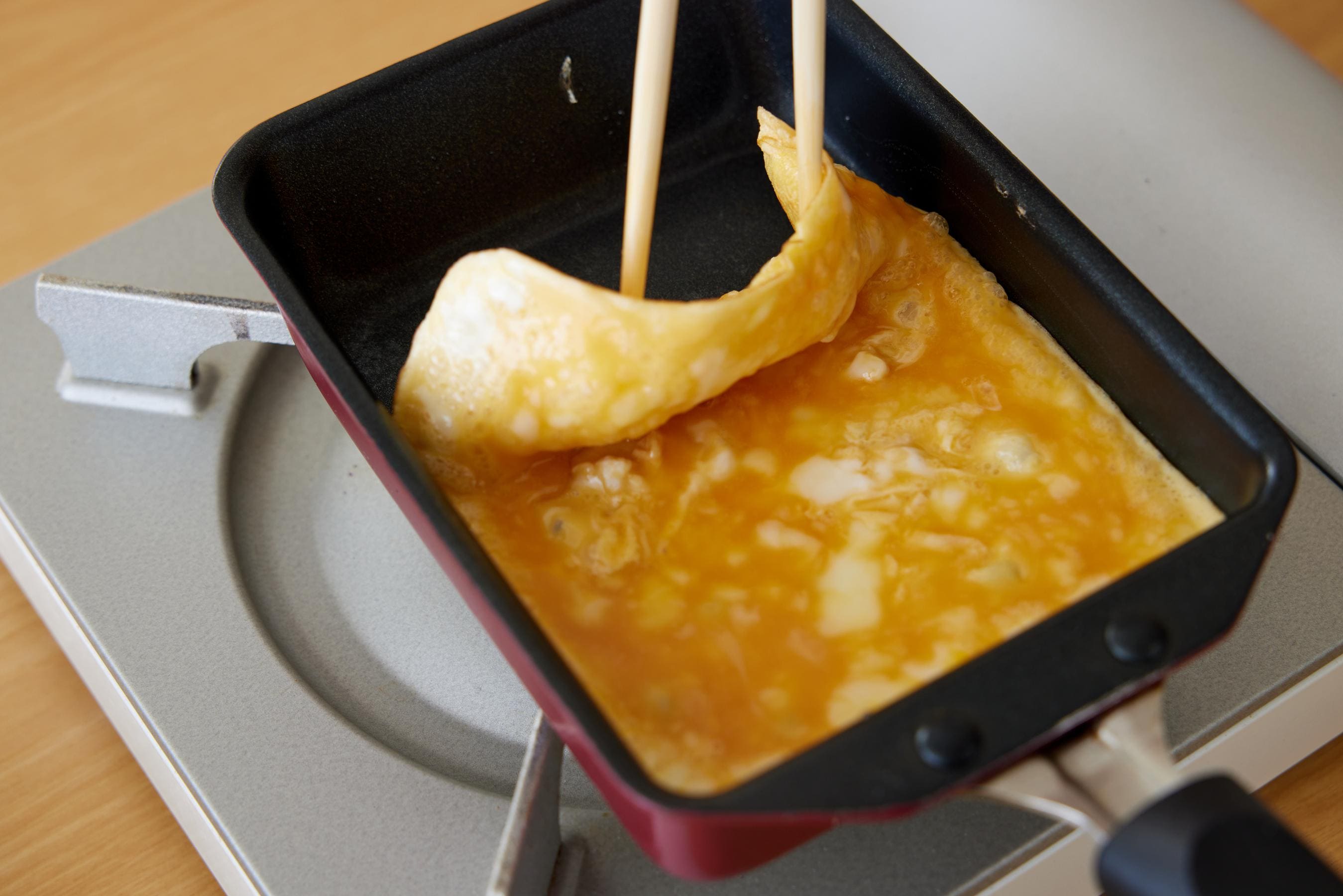
- 3Once the egg mixture is partially cooked to the point it doesn't flow even when tilted, then use chopsticks to lift up the fried egg from the far edge of the pan.
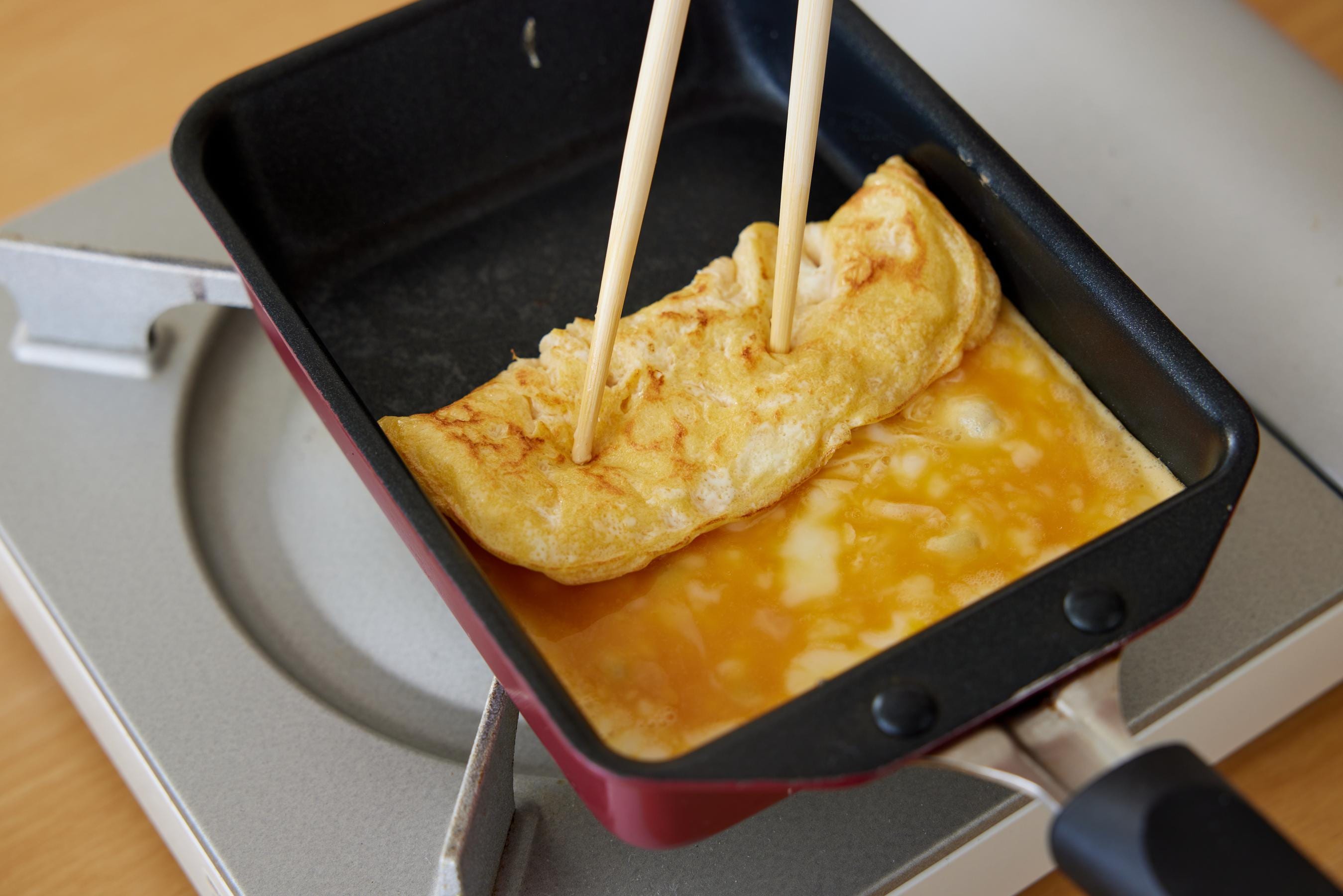
- 4Fold the egg toward you.
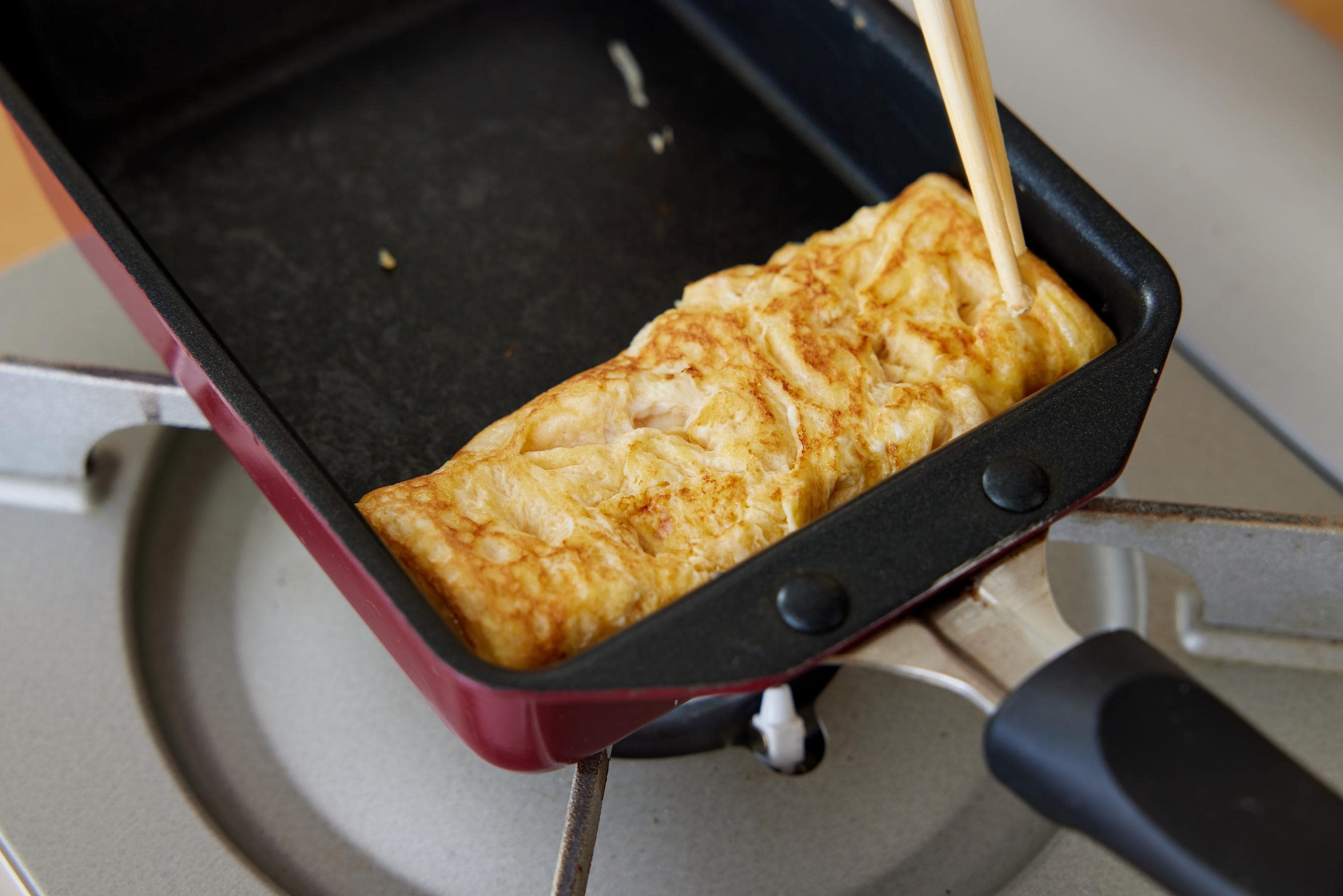
- 5As in the step above, fold the fried egg toward you, rolling it.
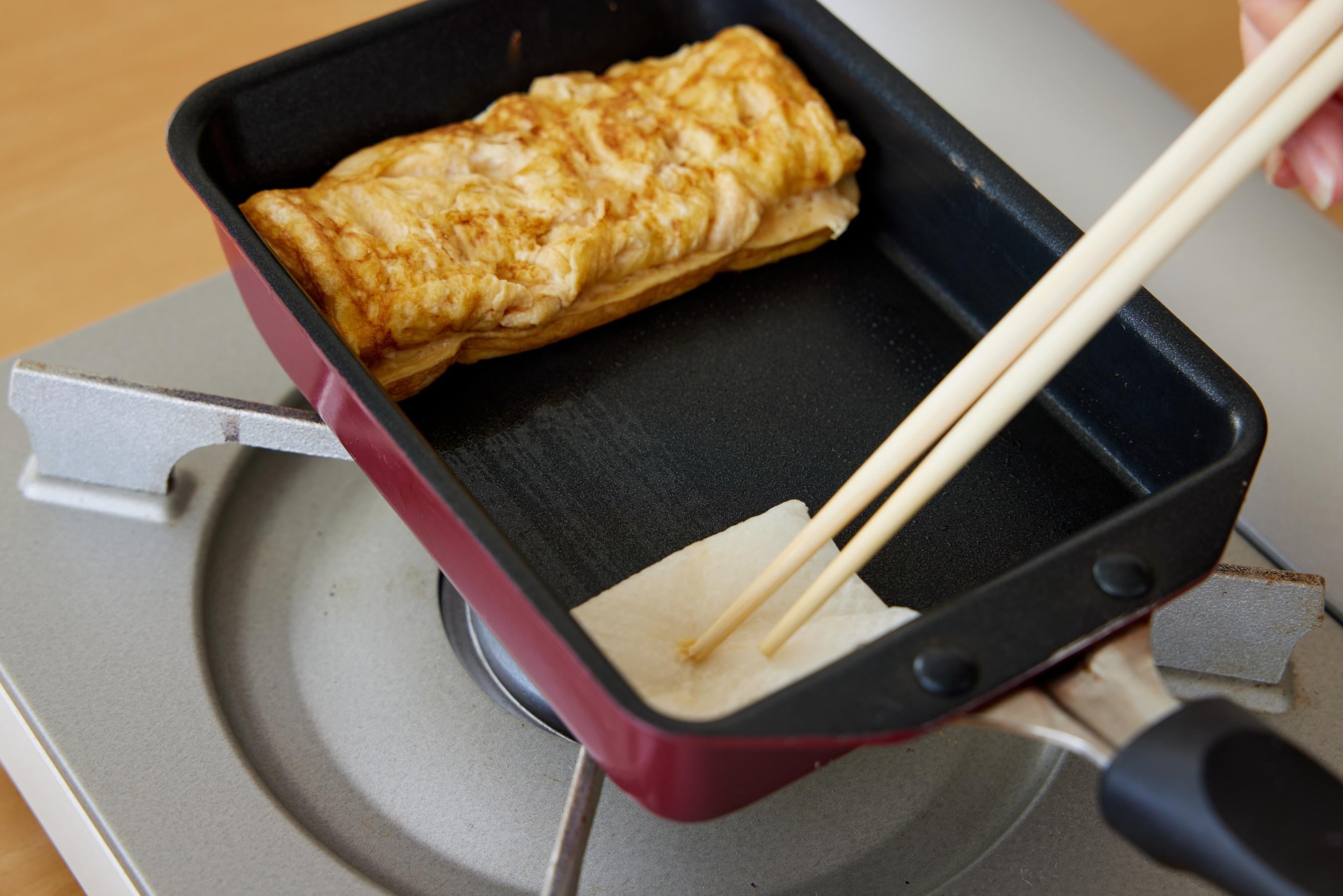
- 6Move the rolled egg to the far edge of the Tamagoyaki pan. Then, re-grease the surface of the pan using a paper towel.
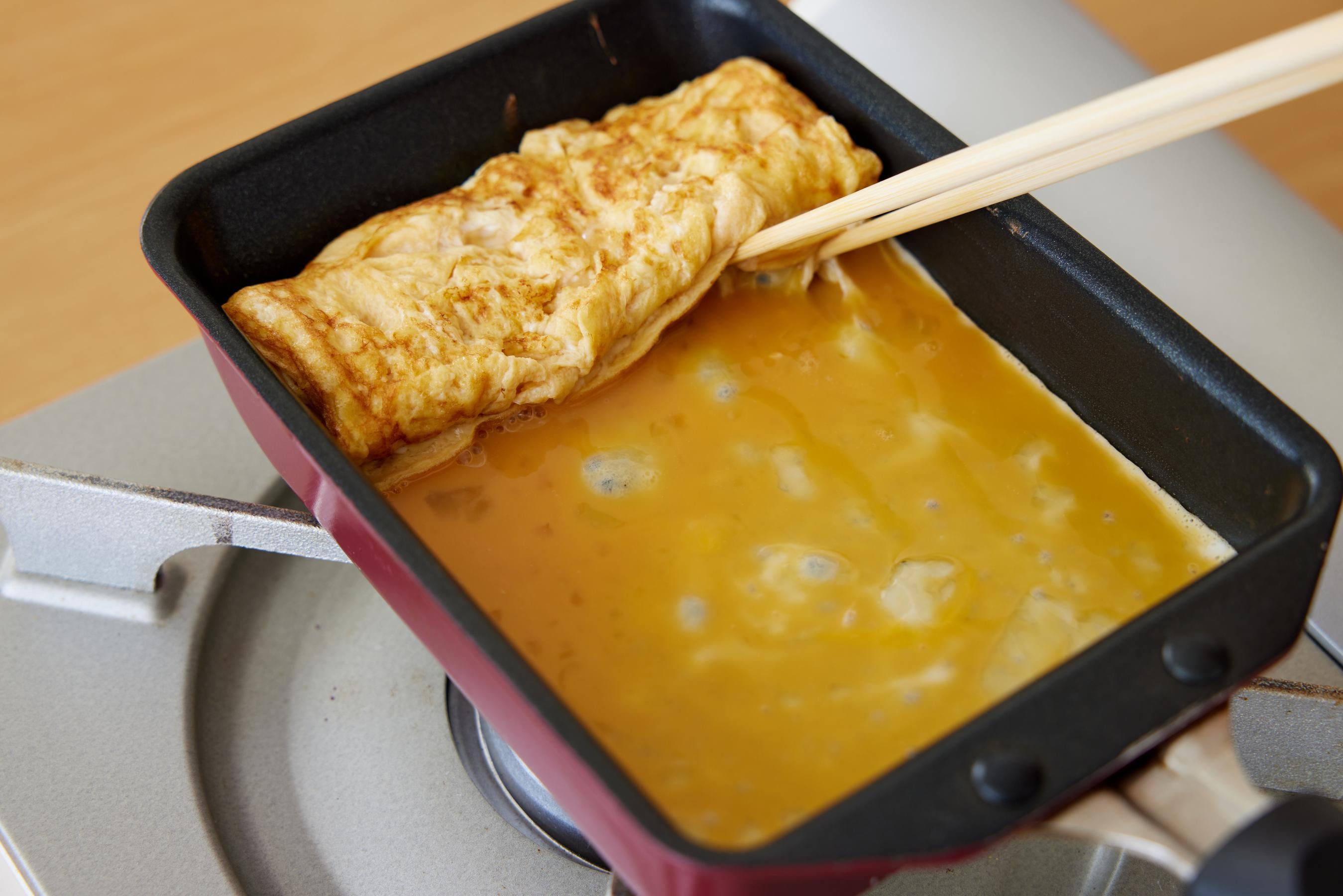
- 7Pour in about 1/2 of the remaining egg mixture. Lift up the near end of the fried egg slightly to allow some of the egg mixture to run underneath it.
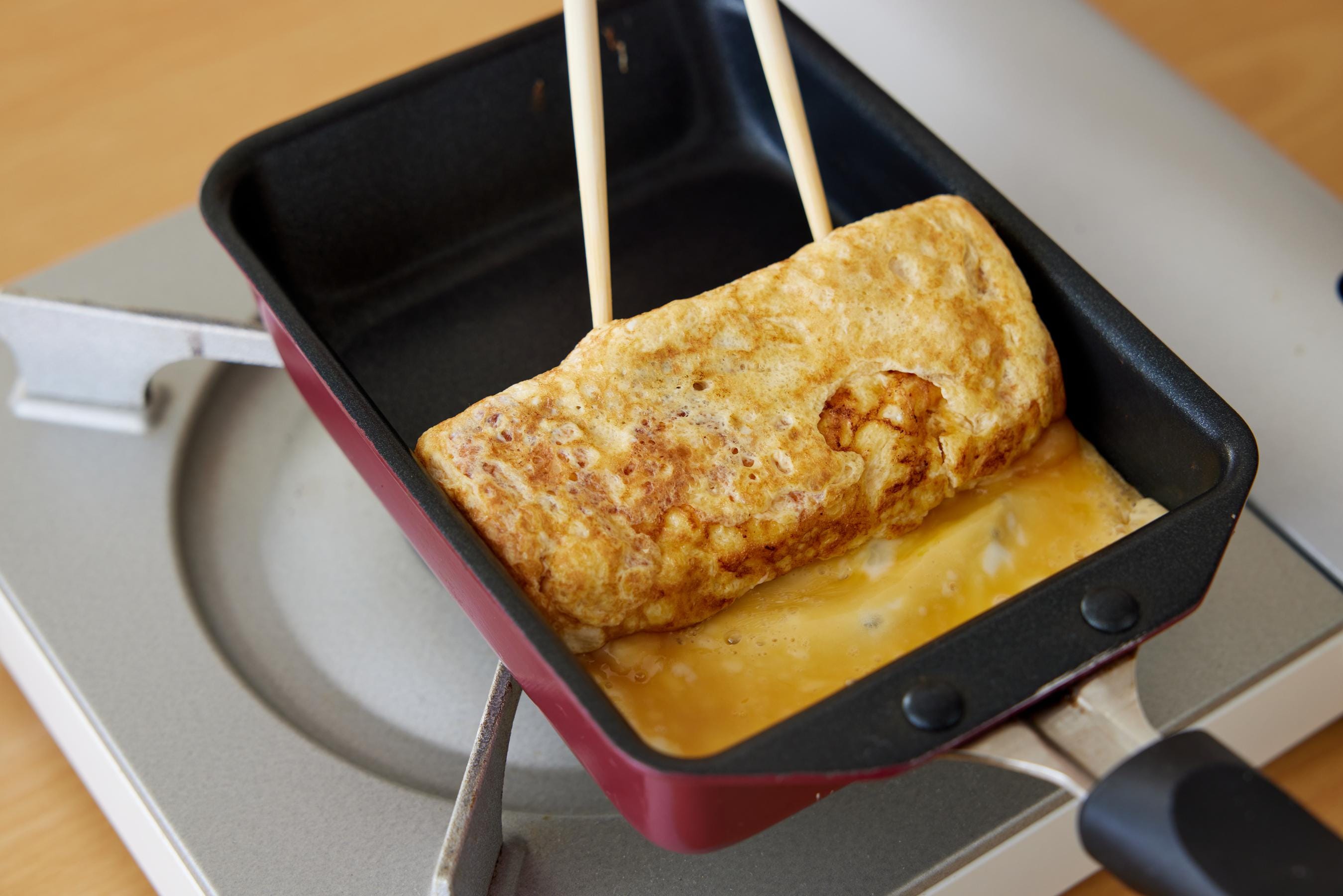
- 8Once the egg mixture is partially cooked to the point it doesn't flow even when tilted, roll it from the far end back to the near end.
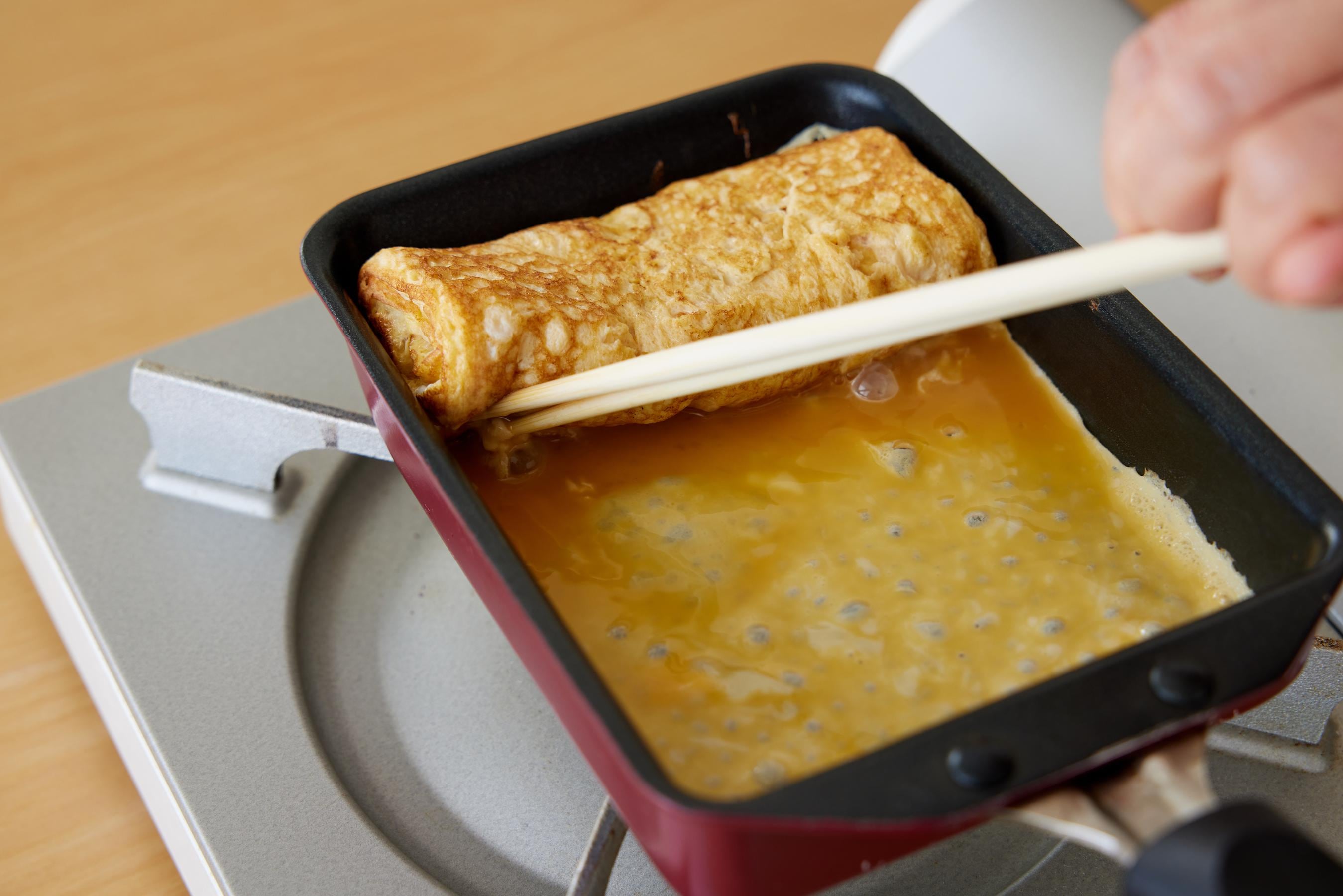
- 9Push the rolled egg to the far edge of the pan, then re-grease the Tamagoyaki pan using a paper towel. Pour in the remaining egg mixture, allowing some to run underneath the fried egg.
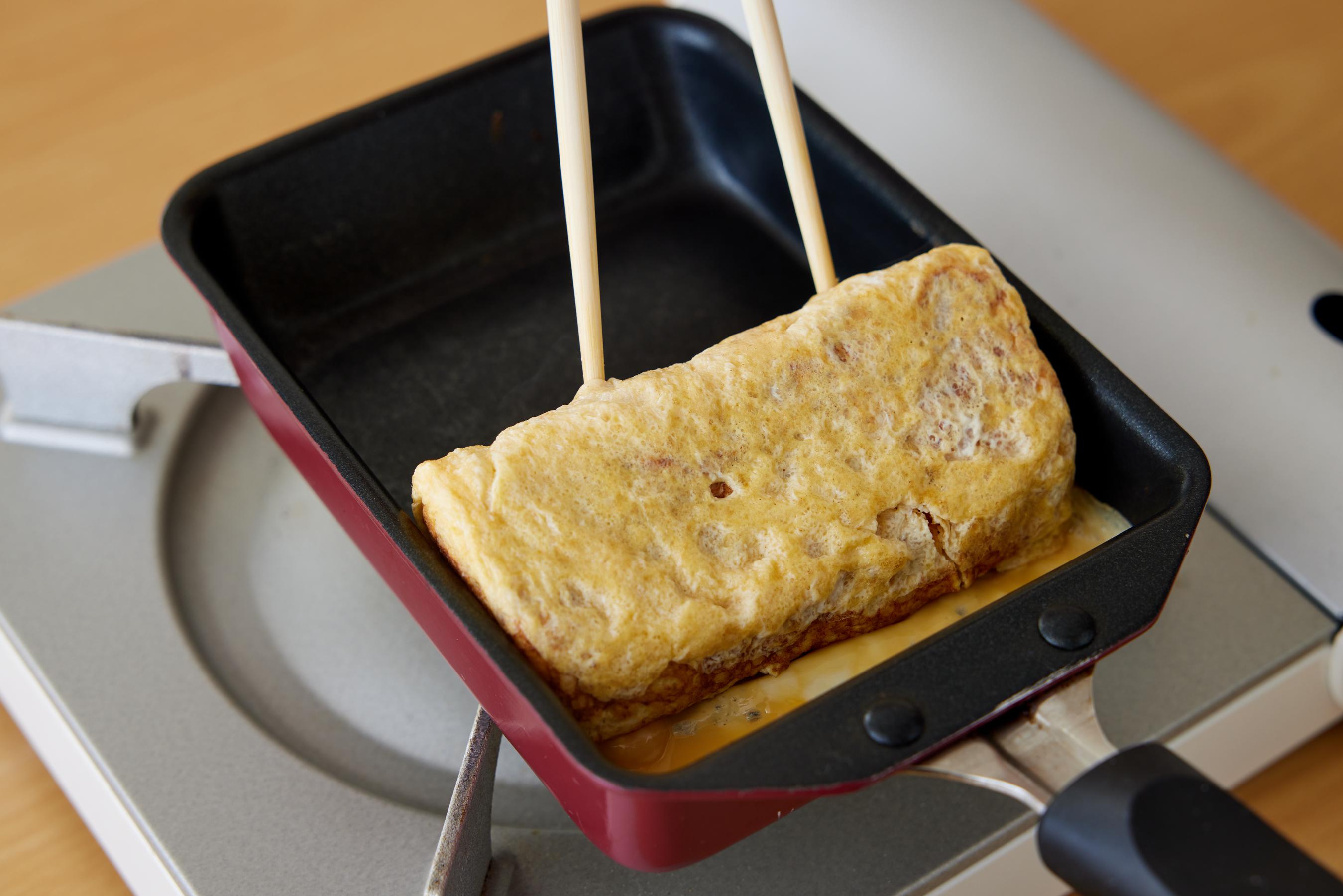
- 10Once the egg mixture is cooked halfway, roll the fried egg to the near end.
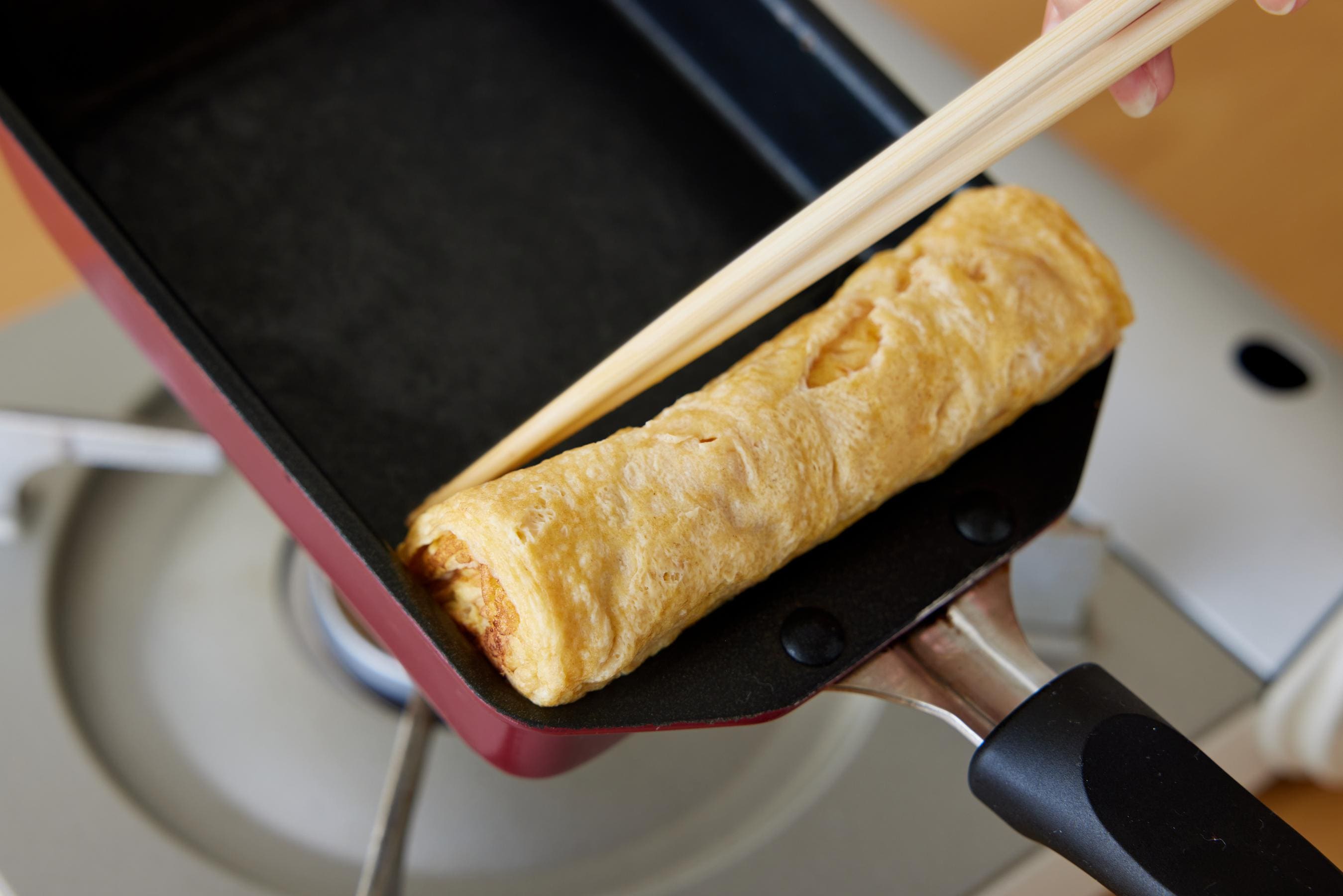
- 11Lift the fried egg, then press it against the near edge of the Tamagoyaki pan.
- TipsYou can use the rectangular shape of the pan to form the shape of the Tamagoyaki. Press gently on the Tamagoyaki using chopsticks so as to give it an even thickness.
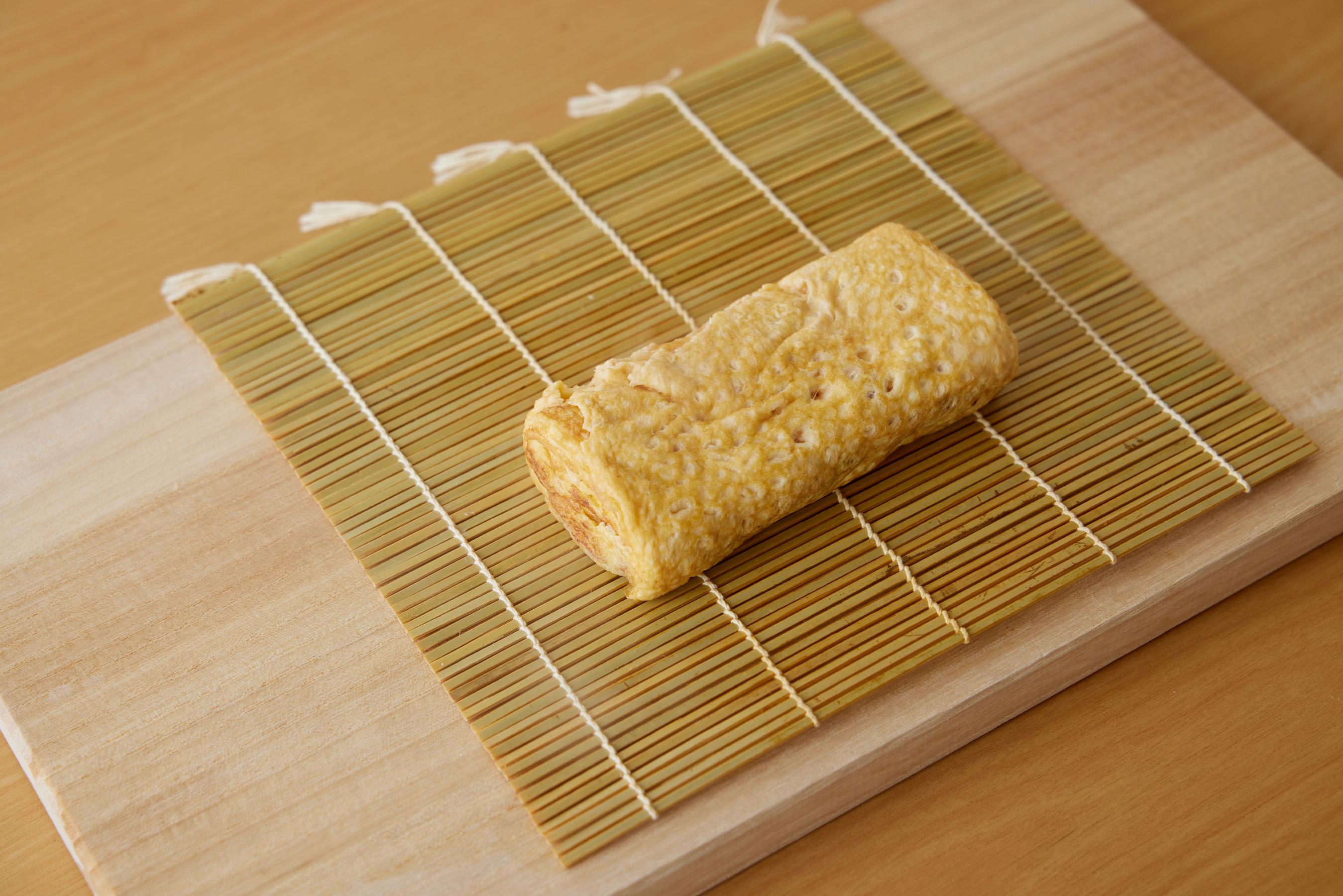
- 12Once the outer edge turns a little golden-brown, place the fried egg onto a "makisu" (sushi mat) or paper towel out on a cutting board.
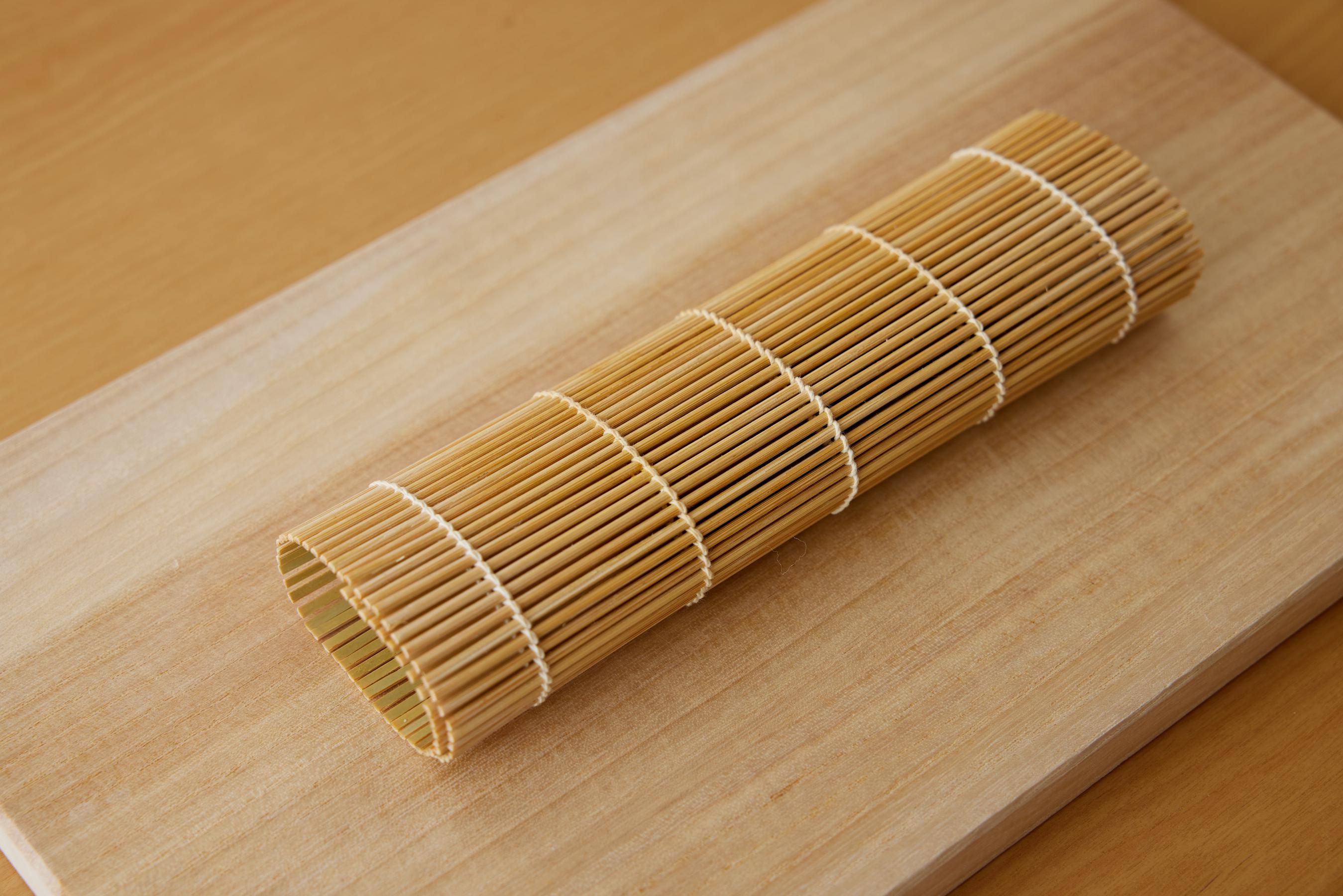
- 13Shape the Tamagoyaki by rolling it in a "makisu" (sushi mat) or paper towel and allow it to sit for 3 minutes.
- TipsWhen you let it sit for a few moments, the residual heat will permeate and continue to cook the soft and fluffy egg!
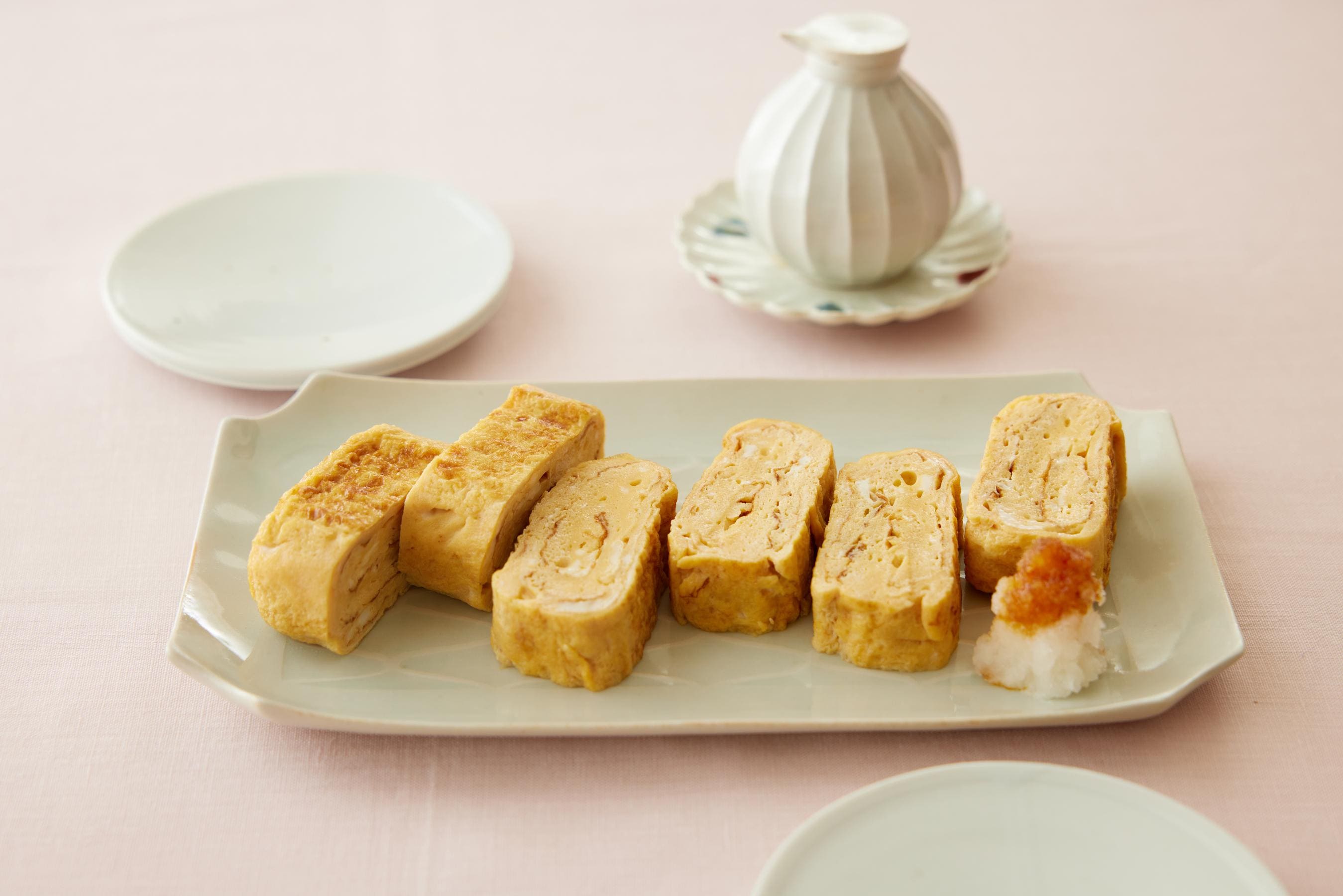
- 14Once it has cooled, cut the Tamagoyaki into bite-sized pieces and serve on a plate. Garnish with grated daikon radish and pour a small amount of Kikkoman Soy Sauce (separate from listed ingredients) on top to eat with the Tamagoyaki!
Watch video for making Tamagoyaki in a Tamagoyaki Pan
How to Make Tamagoyaki in a Fry Pan
If you don’t have a Tamagoyaki pan, you can also cook Tamagoyaki using a standard fry pan! After pouring the egg mixture into the pan and folding it into a rectangular shape, roll it up. If you use both a spatula and a fork, you can roll the Tamagoyaki into a nice shape!
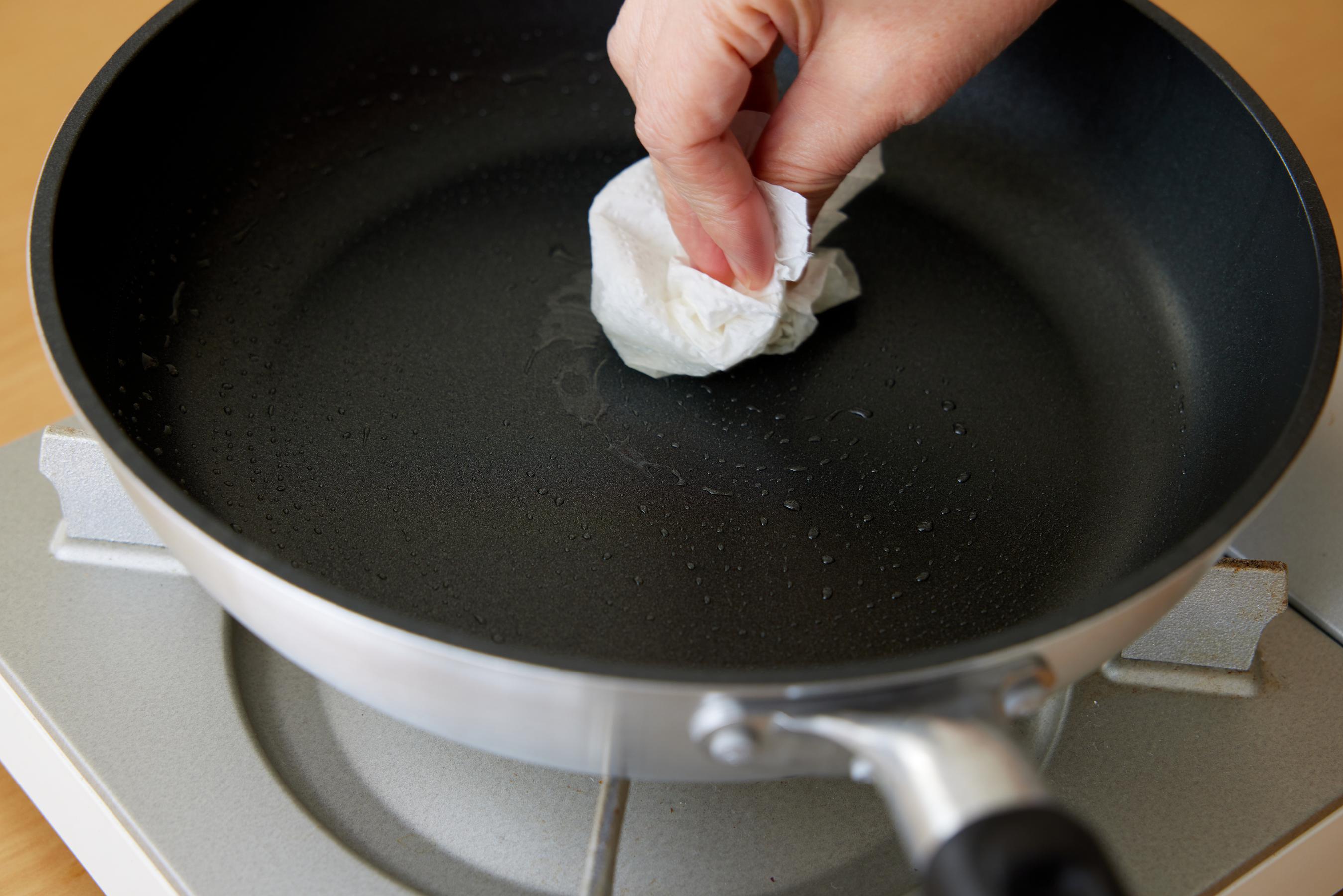
- 1Using a paper towel, grease the frying pan with cooking oil, then, set over medium heat.
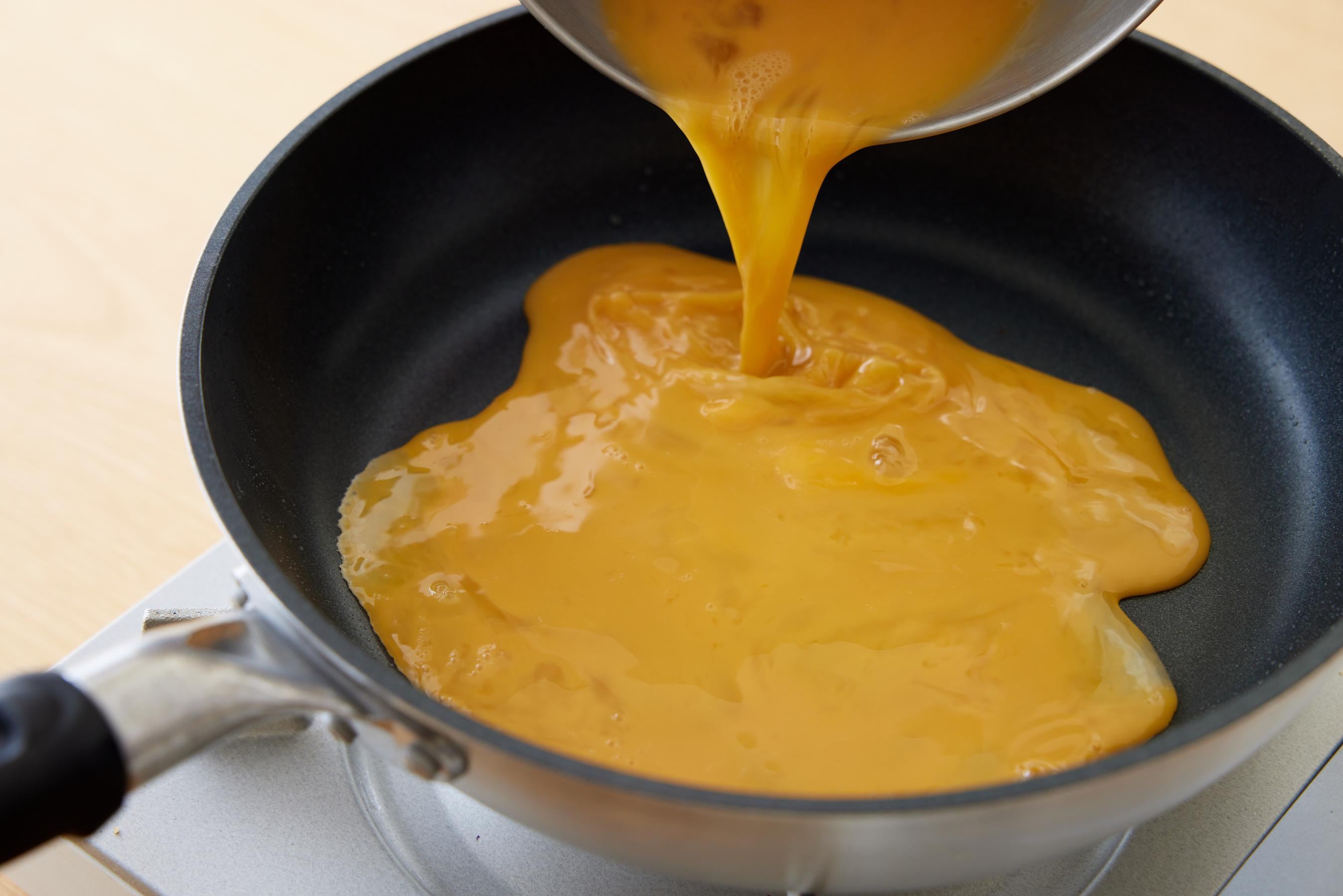
- 2Once hot, pour in the beaten egg mixture, stirring thoroughly with a fork, and reduce the heat to medium-low.
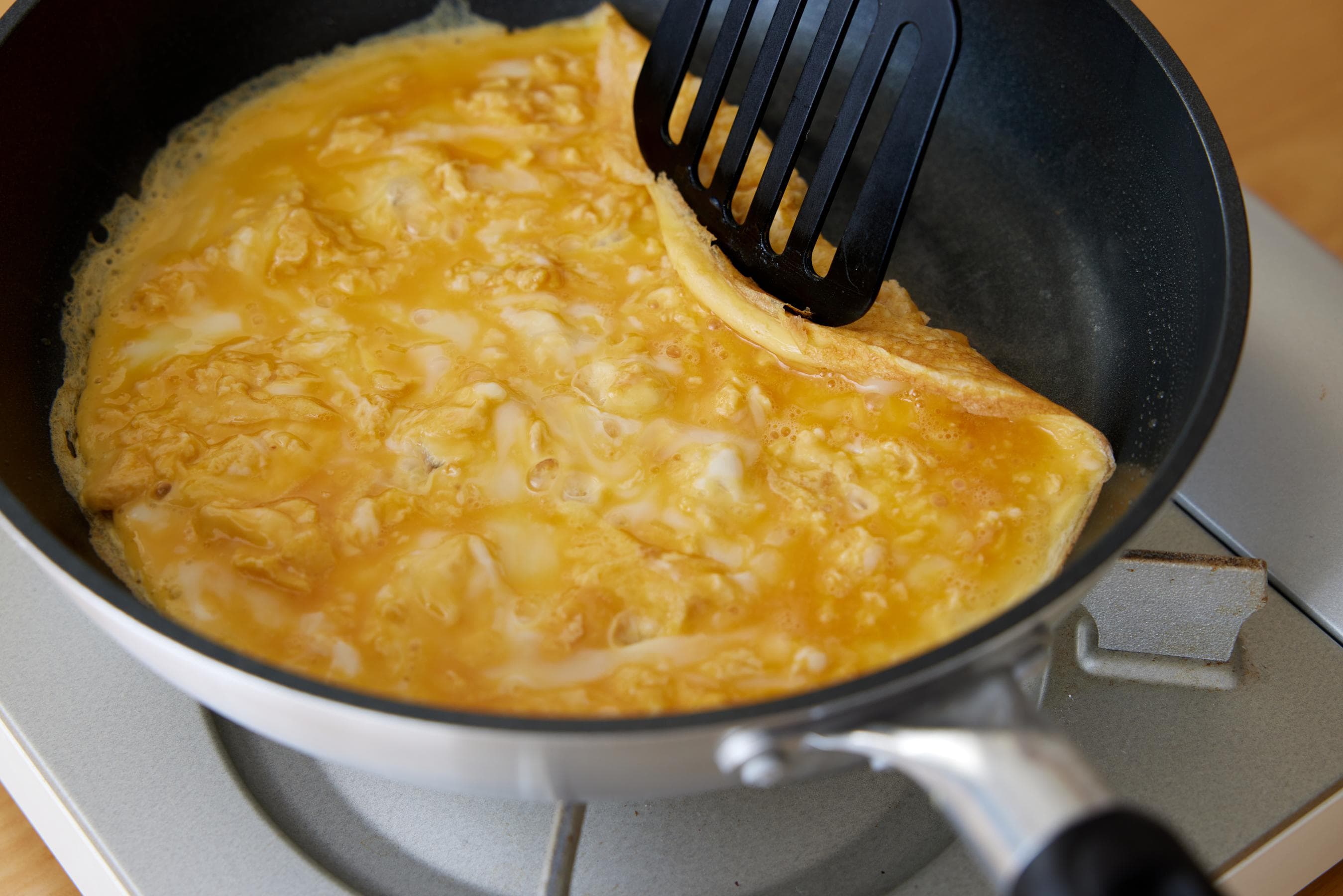
- 3Once the egg mixture is partially cooked to the point it doesn't run even when tilting the fry pan, use a spatula to slightly lift up and fold the fried egg from one of the side edges.
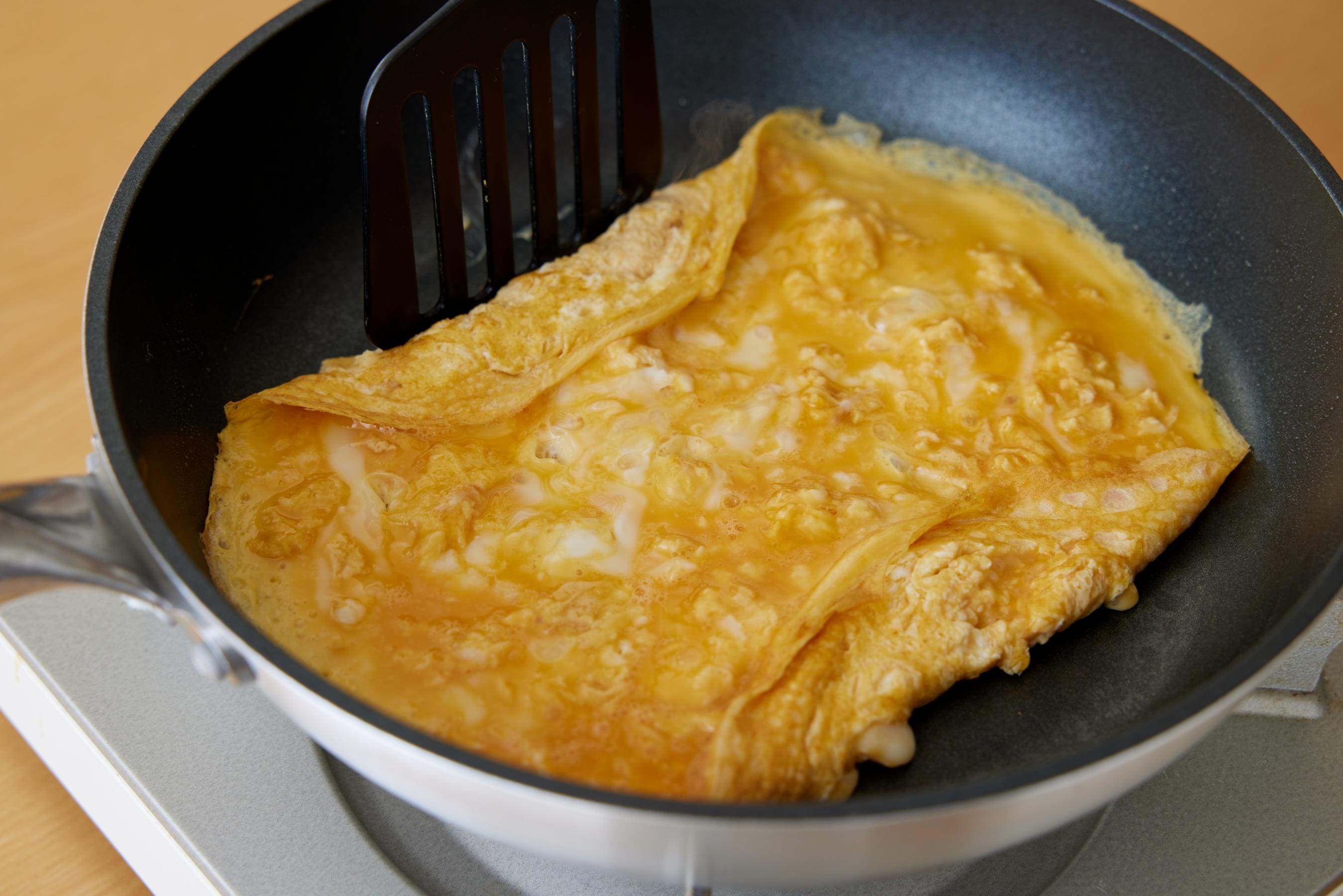
- 4Slightly lift and fold the other side of the fried egg.
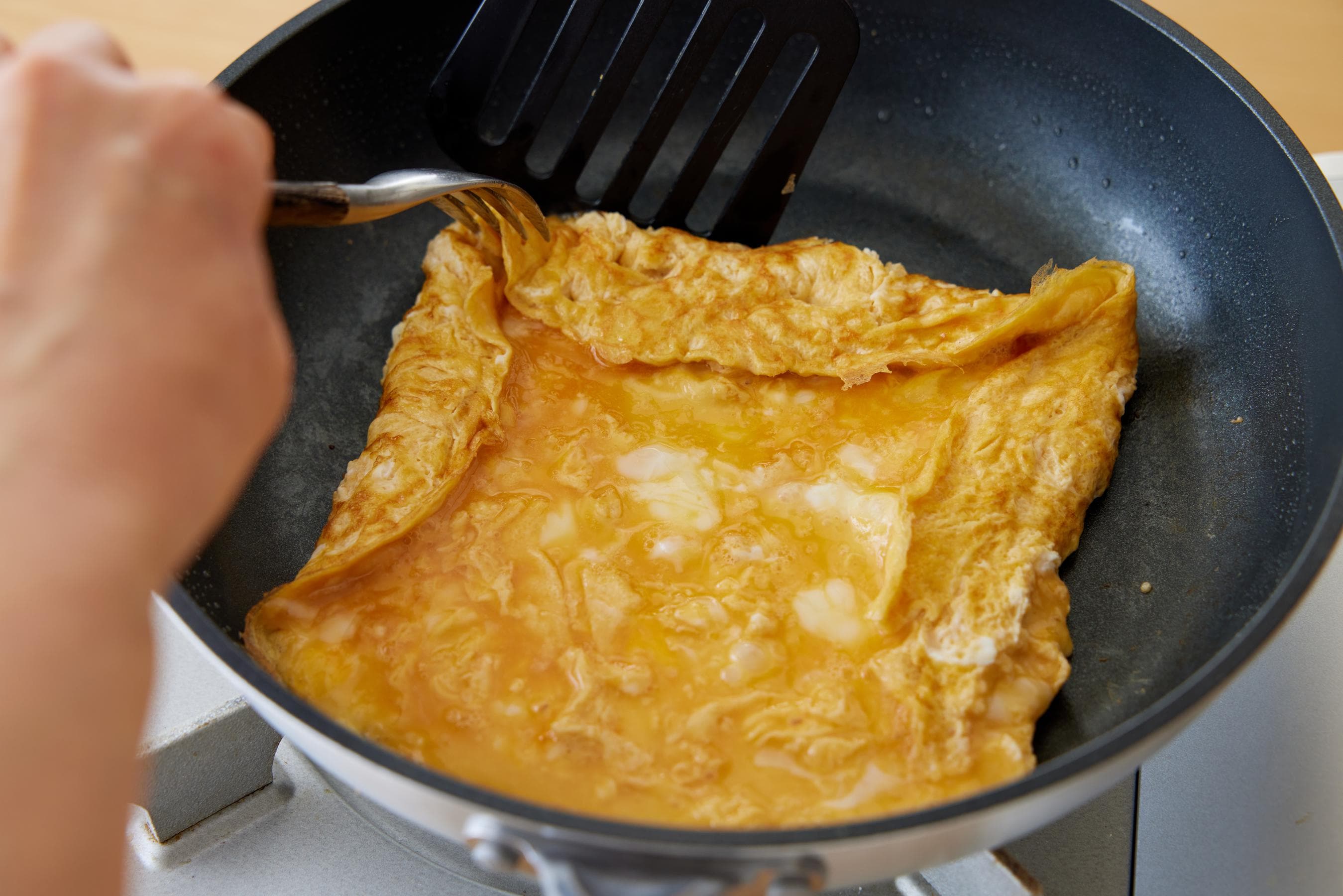
- 5Similar to the previous step, slightly lift and fold the far edge of the fried egg.
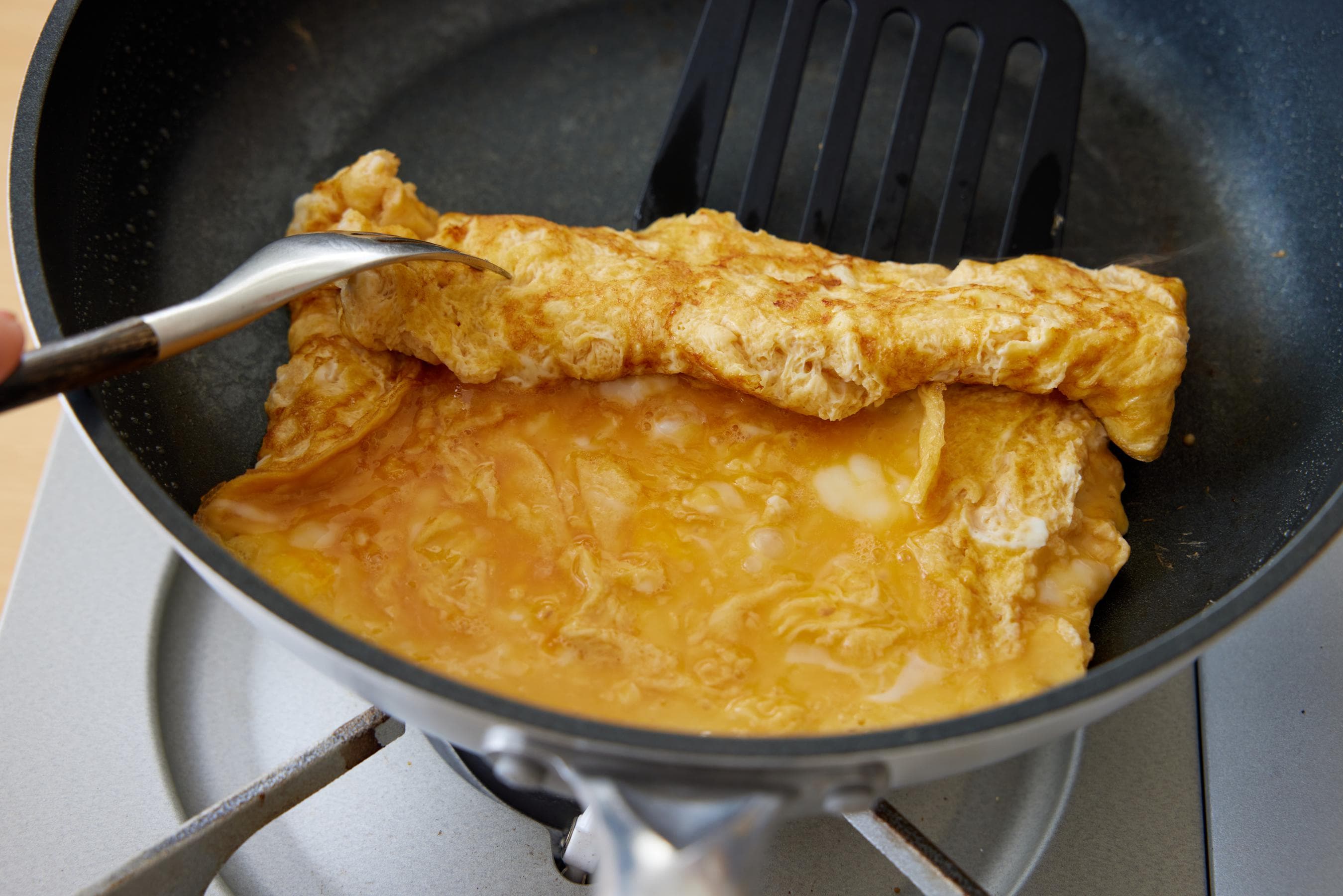
- 6Roll up the fried egg from the far side to the side nearest you. Since the area of the egg is large, it might be easier to use a fork or other utensil when rolling the egg here.
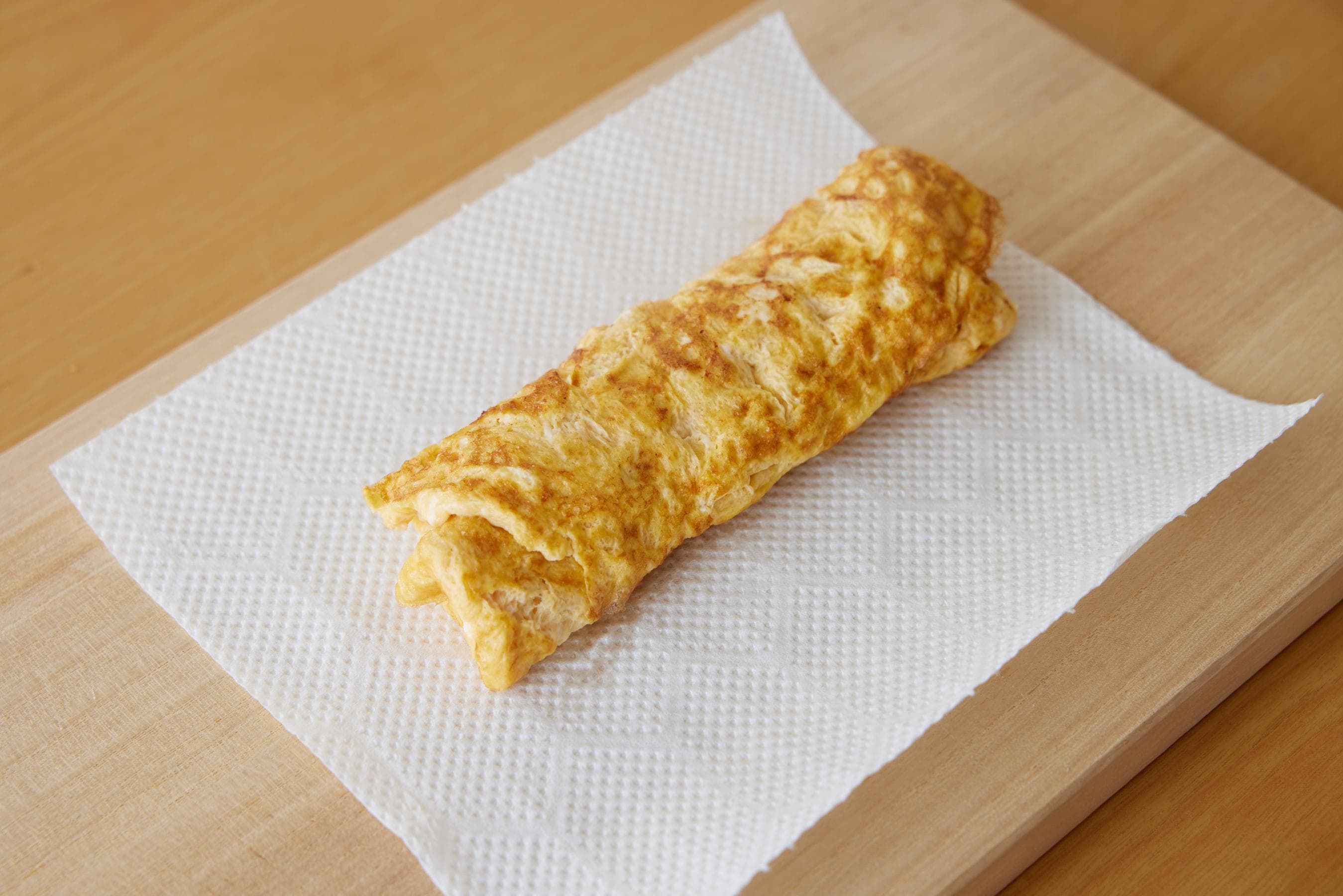
- 7Once the outer edge turns a little golden-brown, place the fried egg onto a paper towel out on a cutting board.
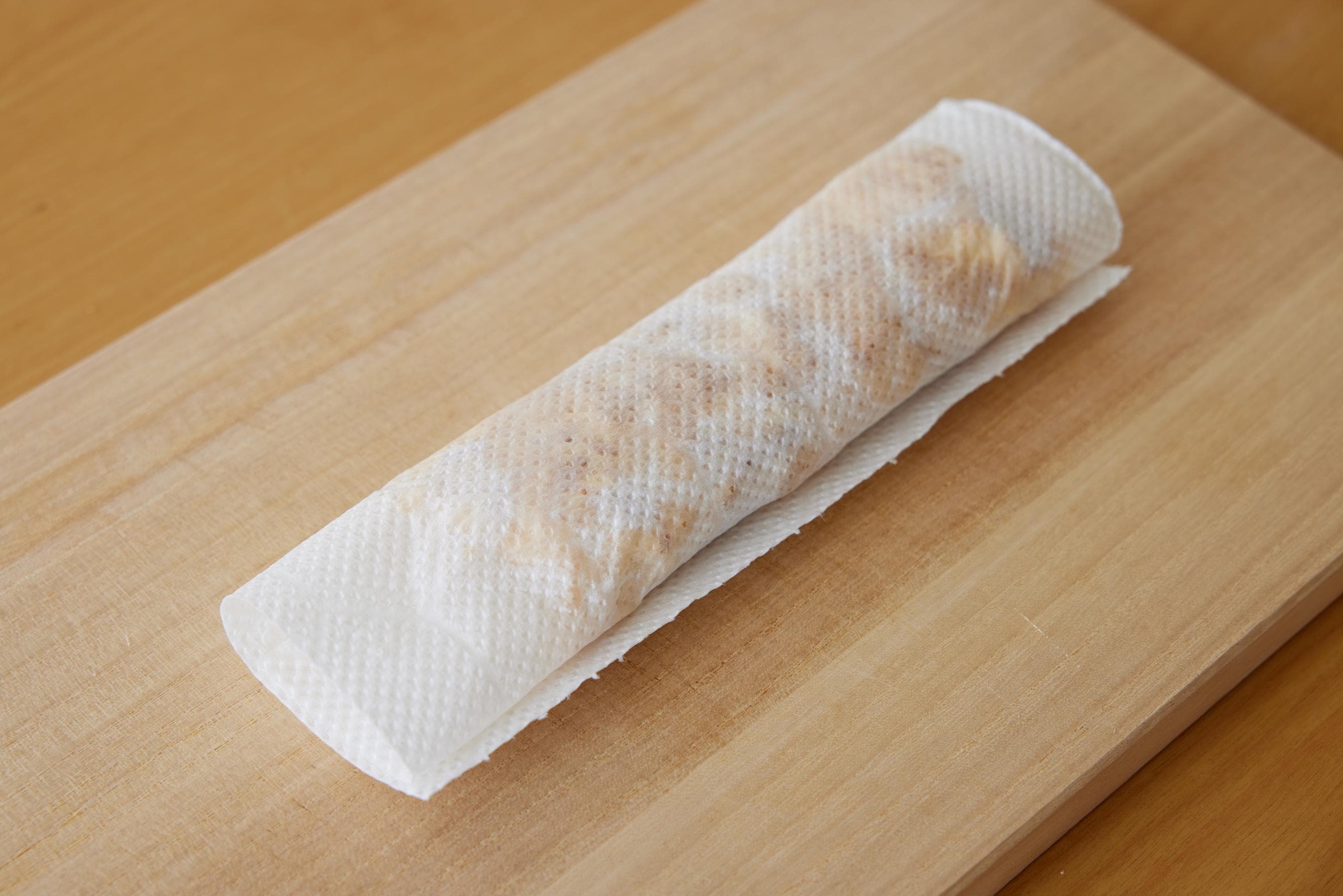
- 8Roll the Tamagoyaki up inside the paper towel, and allow it to sit for up to 3 minutes
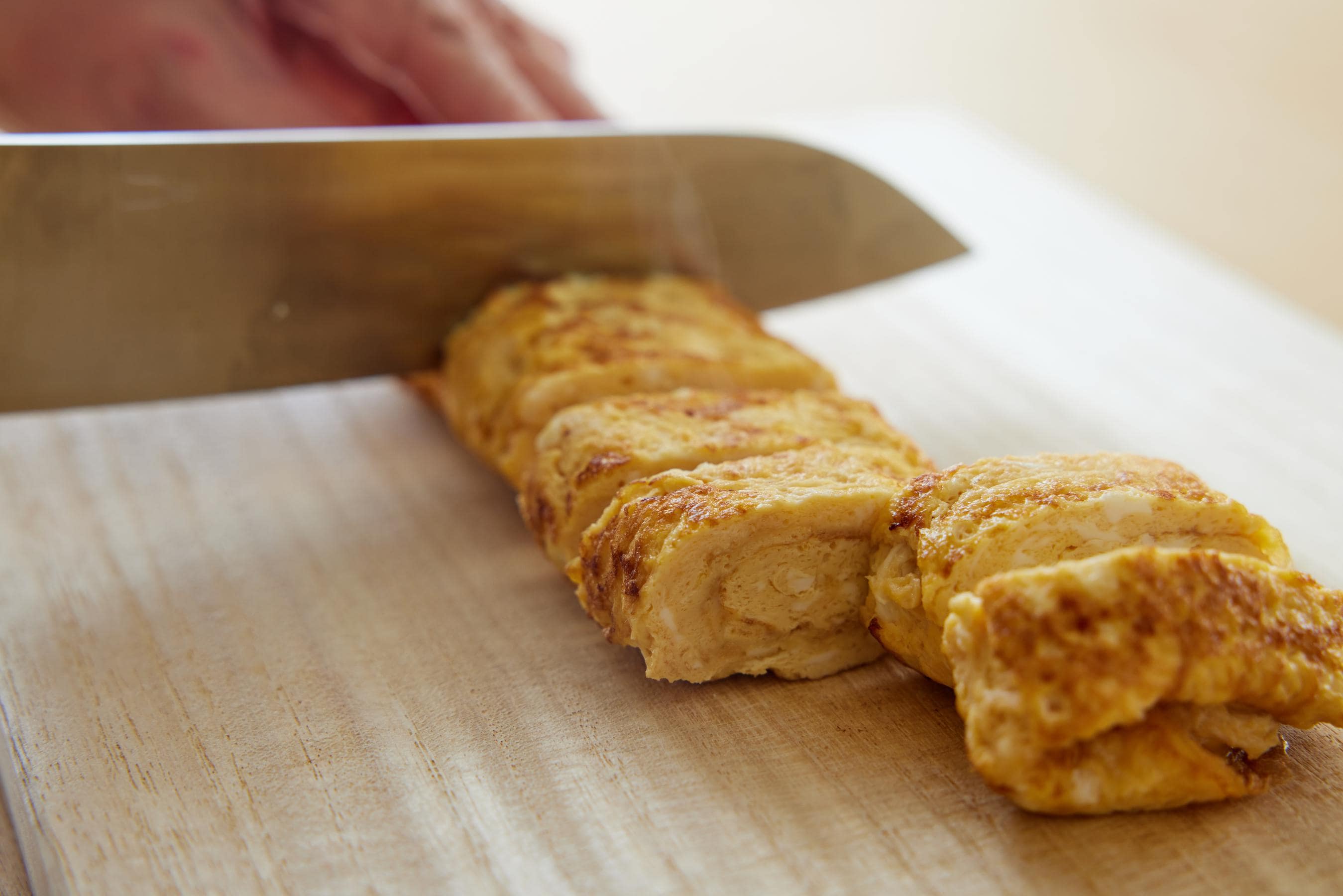
- 9Once it has cooled, cut the Tamagoyaki into bite-sized pieces and serve on a plate. Garnish with grated daikon radish and pour a small amount of Kikkoman Soy Sauce (separate from listed ingredients) on top to eat with the Tamagoyaki!
Watch video for making Tamagoyaki in a fry pan
More Ways to Enjoy Tamagoyaki
Serve as an Appetizer With Fruit
The sweetness of Tamagoyaki pairs well with the acidity and aroma of fruit! You can cut the Tamagoyaki into bite-sized pieces and serve with seasonal fruits as an appetizer. Cut them in any shape you like. Great for home parties!
Sliced Tamagoyaki for Sandwiches
Cut the Tamagoyaki into thin slices and place on mustard-covered bread along with your favorite cheese and leafy greens. Garnish with pickles to accentuate the flavor. If you can find it, try it with “shokupan” (Japanese milk bread)! Both the bread and the Tamagoyaki will be fluffy, taking on a new level of delicious flavor.
Kitchen Utensils Used in This Recipe
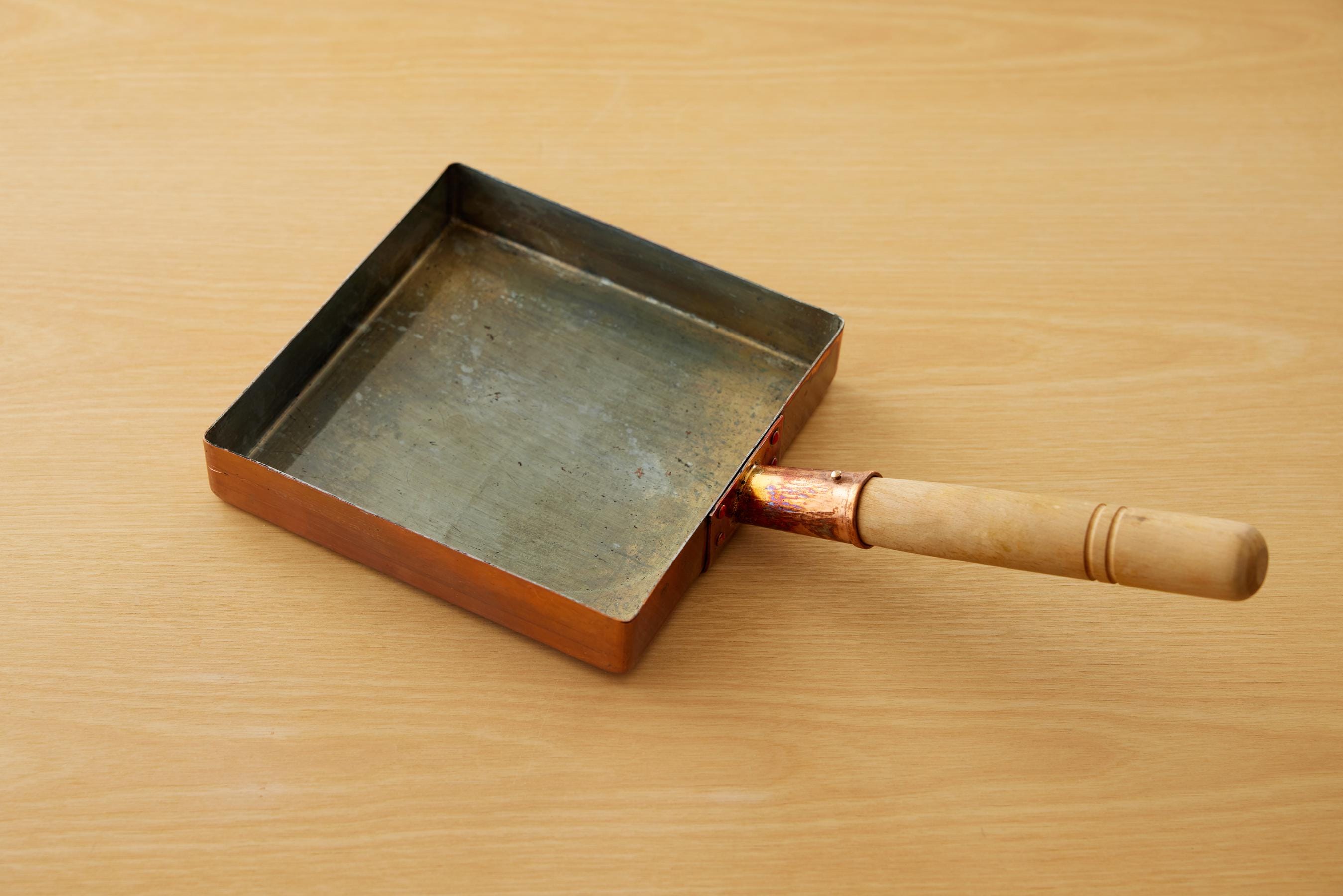
Copper Tamagoyaki Pan
Copper is a good conductor of heat and conducts heat evenly throughout the pan, allowing you to cook fluffy Tamagoyaki quickly. It is used mainly by professional cooks such as chefs and sushi chefs, and can be purchased at cookware stores. Since the body of the pan requires special care, beginners are recommended to use Tamagoyaki pans that have a special (non-stick) coating.
For more information about Tamagoyaki Pan, please see our Glossary page.
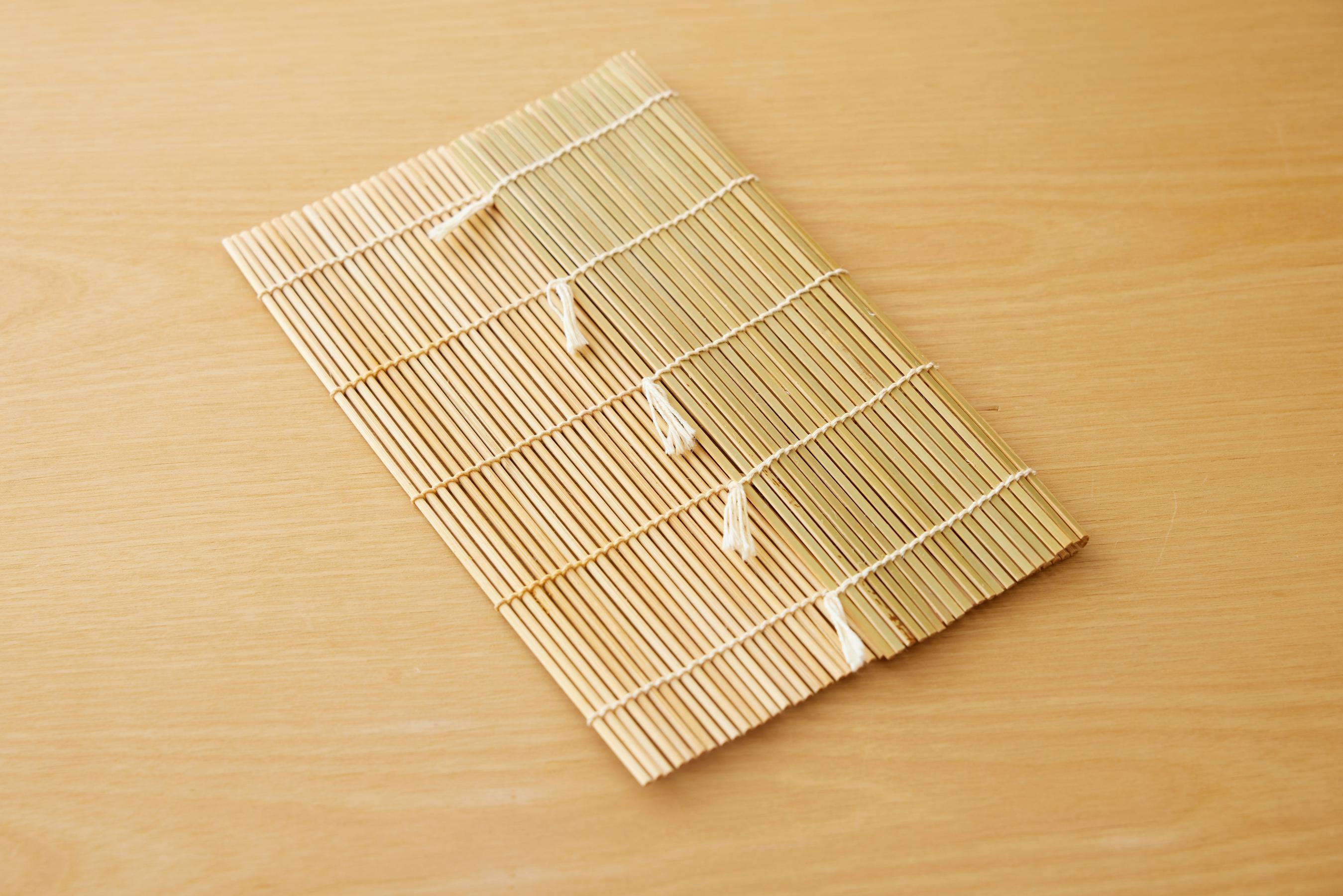
Makisu (Sushi Mat)
A tool made from thinly cut, woven bamboo. It is mainly used to make nori rolls for sushi, and is also used to shape soft foods such as Tamagoyaki. It is said that the name comes from "sudare," an item that has been used since ancient times as a room divider and sunshade.
For more information about Makisu (Sushi Mat), please see our Glossary page.
Kikkoman Products Used in This Recipe
About the Recipe Author
Yuko Ihara
Having lived in England and the U.S., Yuko Ihara is well-versed in a wide range of culinary genres. As a culinary researcher, she creates dishes for magazines and books, develops corporate menus, and also engages in product development and food consulting. She introduces easy-to-follow tips on how to make delicious food at home, emphasizing the importance of seasonality and healthful eating. When travelling, she loves to search for delicious vegetables and ingredients.
Instagram: @iharayukoo
About Washoku Lesson
Washoku Lesson is special content offering detailed and easy-to-understand explanations, including tips for making classic Japanese dishes as well as the many ways of enjoying these, and introductions to special Japanese cooking utensils and annual events.
Related Recipes
15min
307kcal
600mg
20min+
124kcal
197mg
15min
274kcal
512mg
20min
367kcal
591mg


